My first experience with Drouyn drums was sitting behind a kit on holidays with my family on Daydream Island. I was probably aged about 10. I purchased a set second hand when I was 14. This was my second drum kit. It was a huge advance on the first one; which was a Pearl kit from the early 60’s.
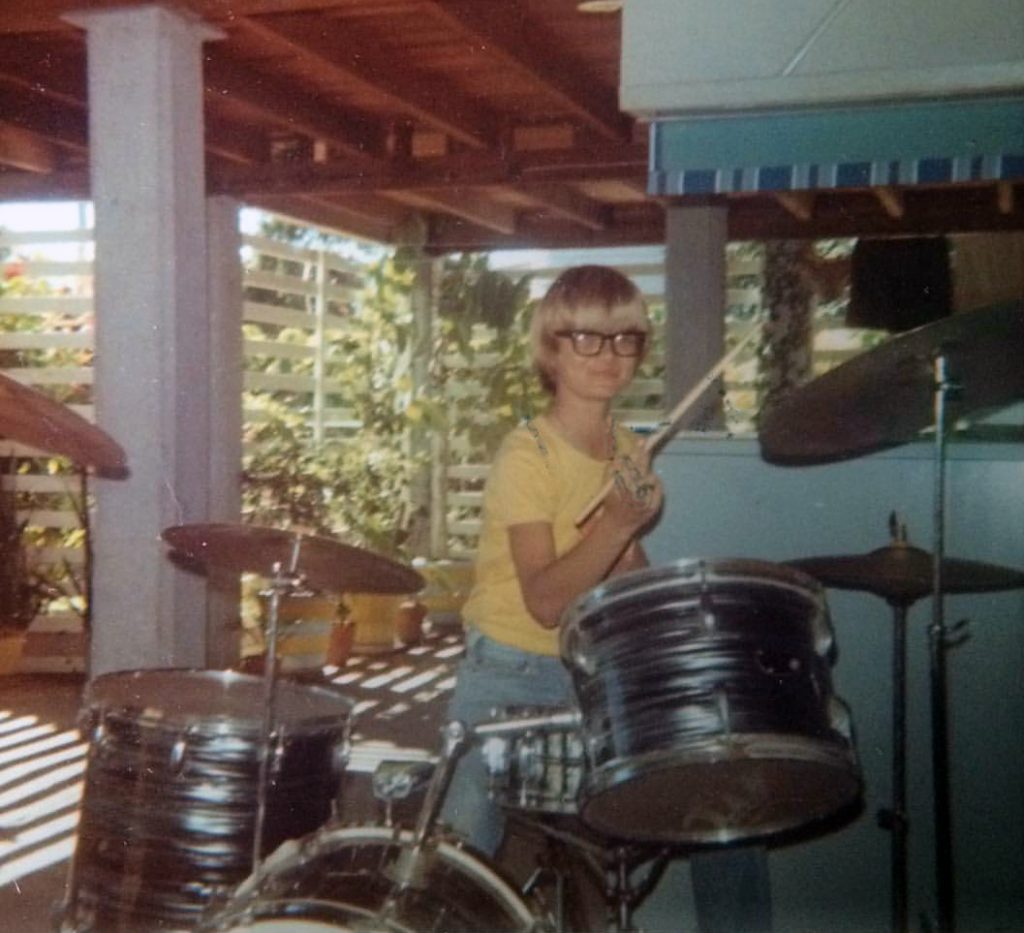
The Drouyn kit had retractable spurs, a disappearing bass drum cymbal stand and slotted lugs. I found it in the classifieds. It came with Paiste 602 hi-hats and an 18″ 602 crash cymbal. When I got this set home, I couldn’t stop playing it. The sound was beautiful.
eBay search.
Many years and many drum kits later, I came across this set on eBay. It was an early model, but looked to be in very good condition. The images however, were not so good. I decided to bid; and to my surprise, I won.
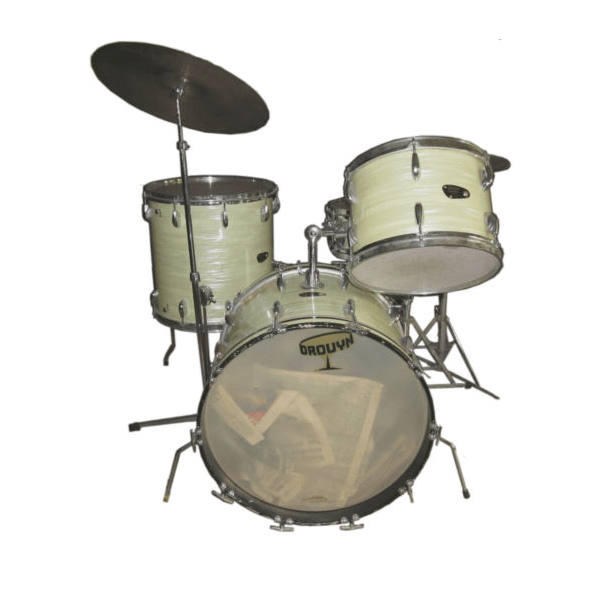
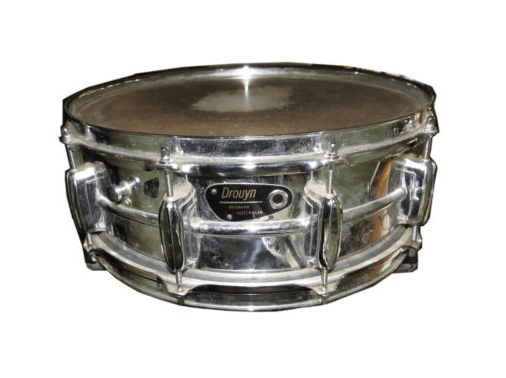
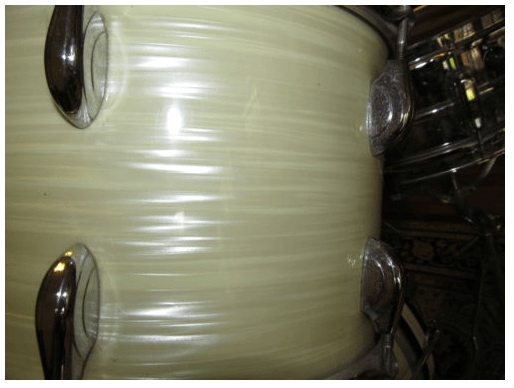
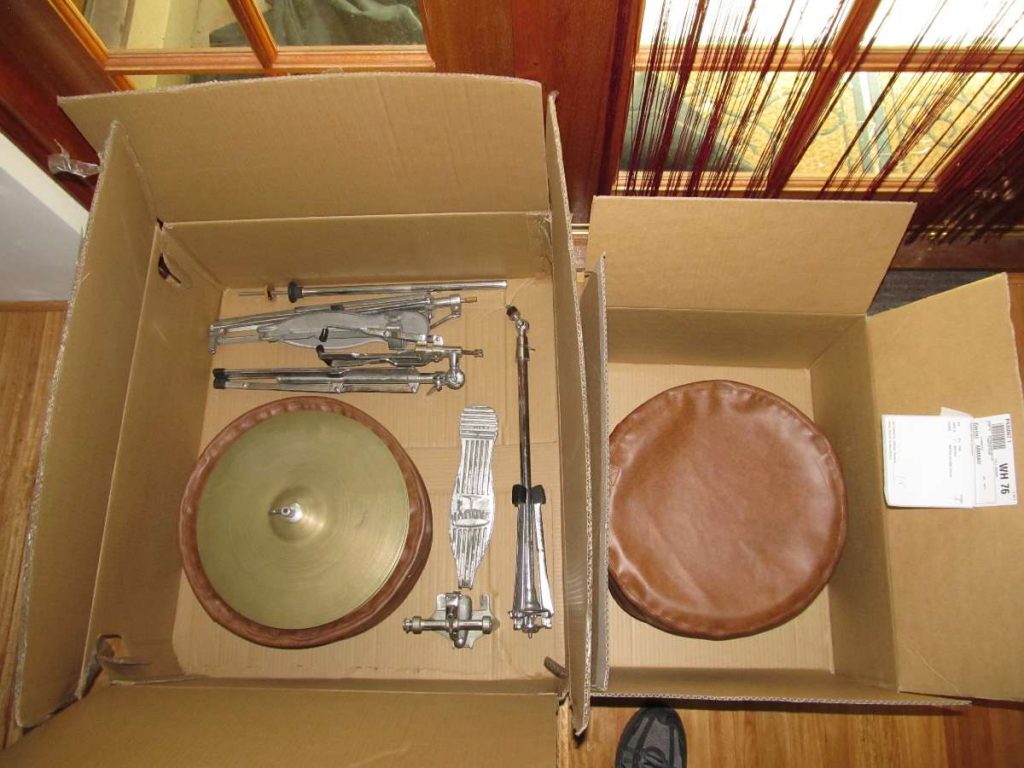


After it arrived at my house, my first impression was that I had opened a time capsule from the 1960’s. Inside the bass drum were newspapers with stories about the disappearance of Harold Holt. As I worked on the set, I began to understand some of the effort that had gone into it’s construction – and more than a few questions were raised as well.
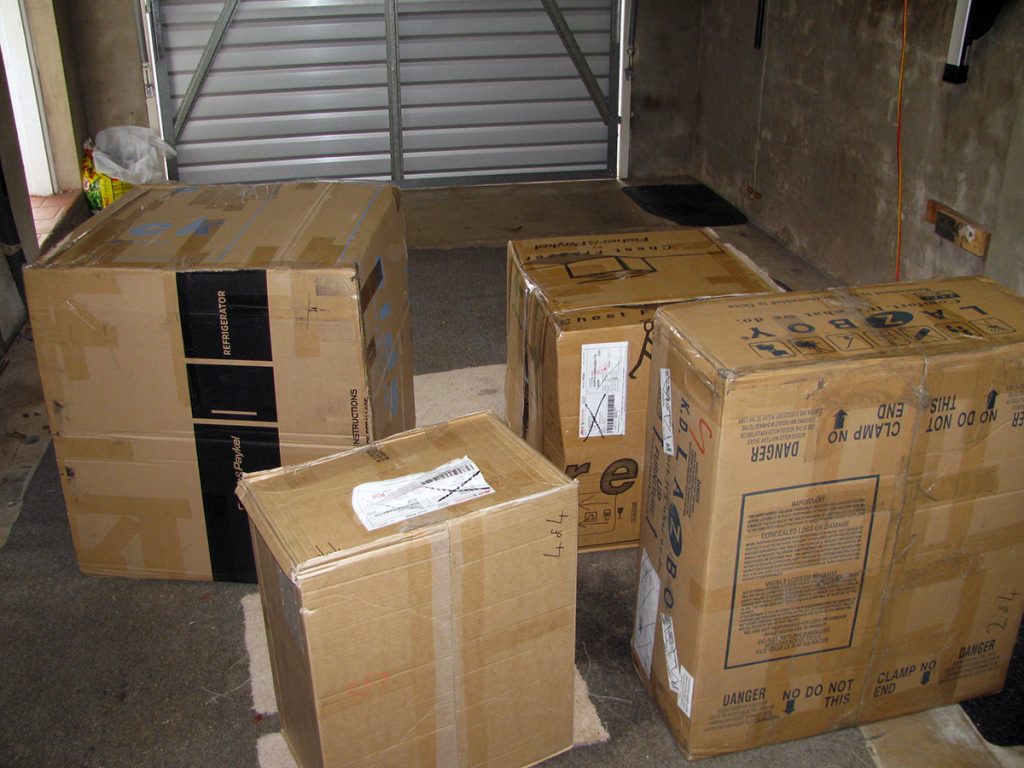
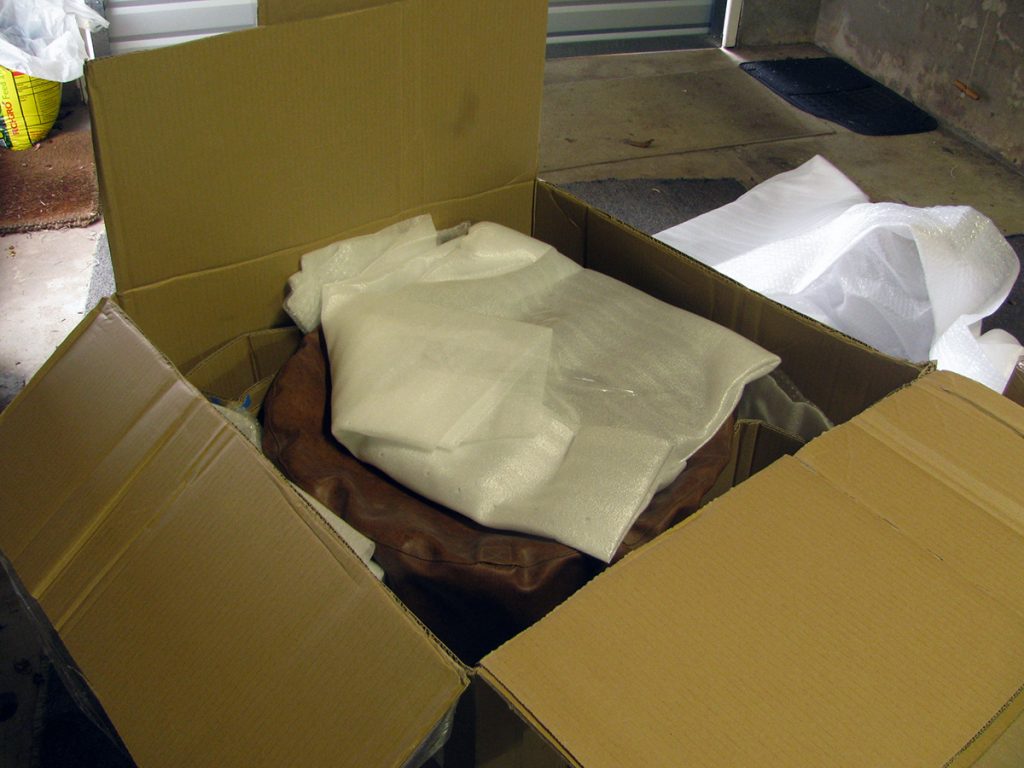
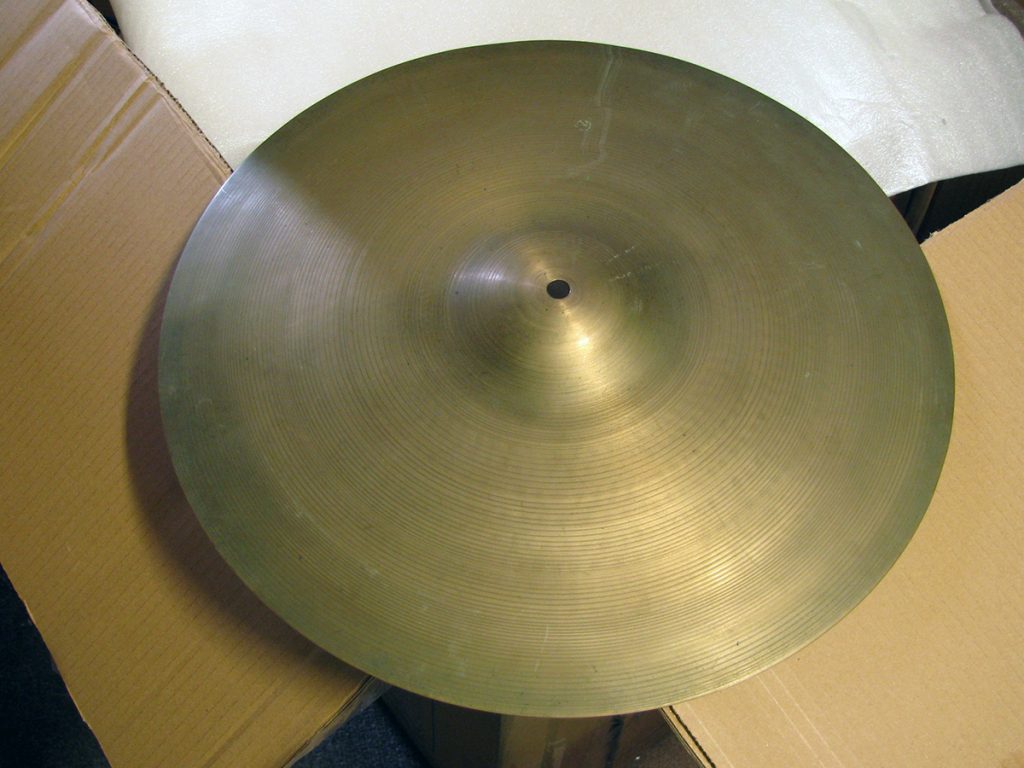
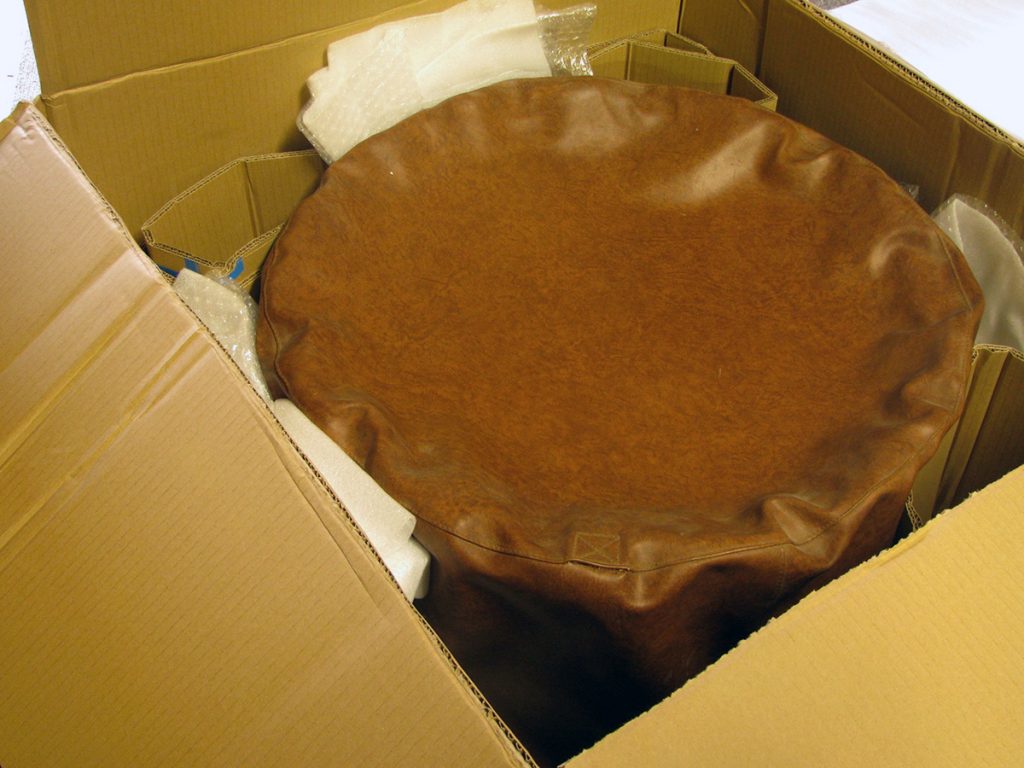

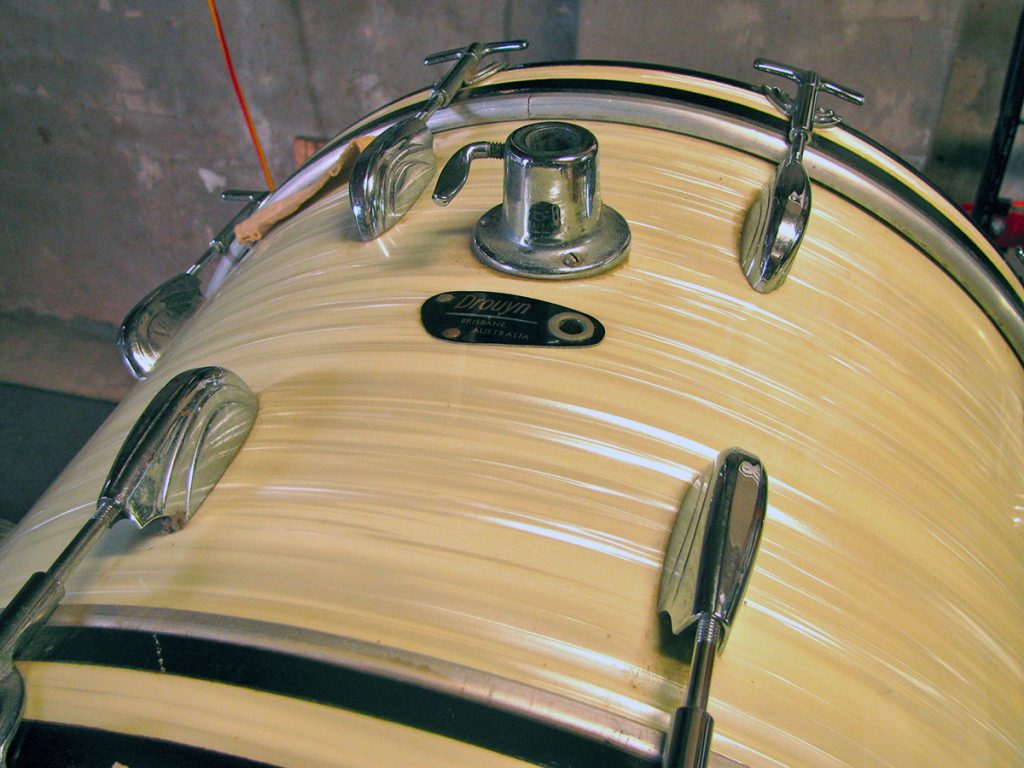
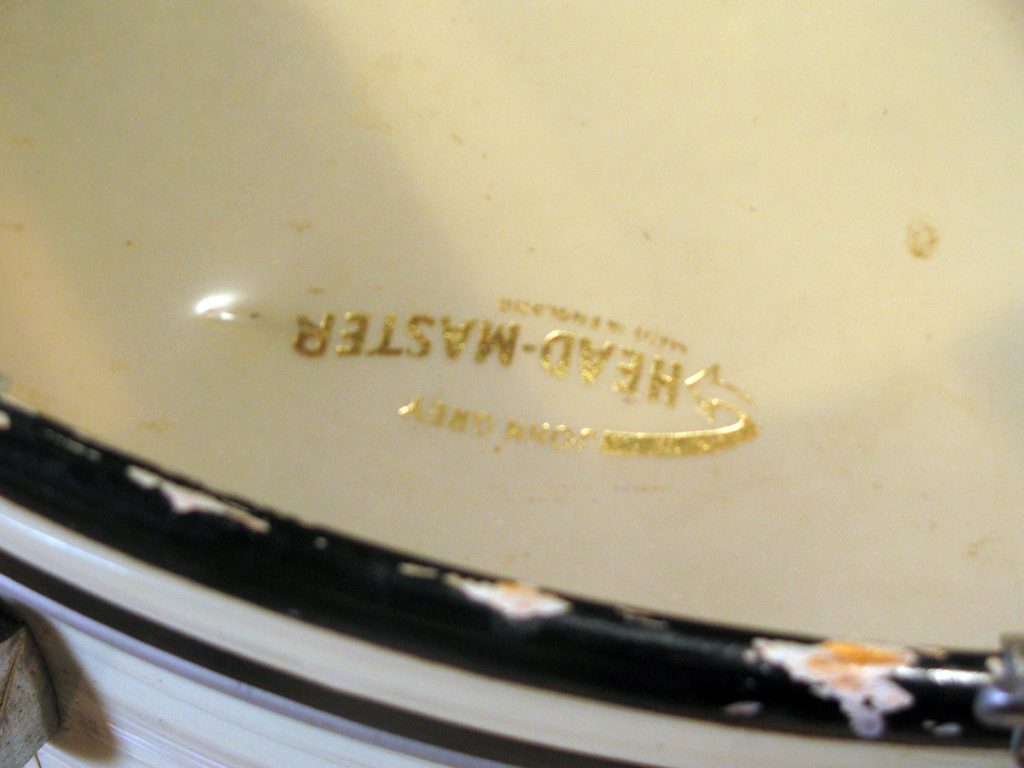
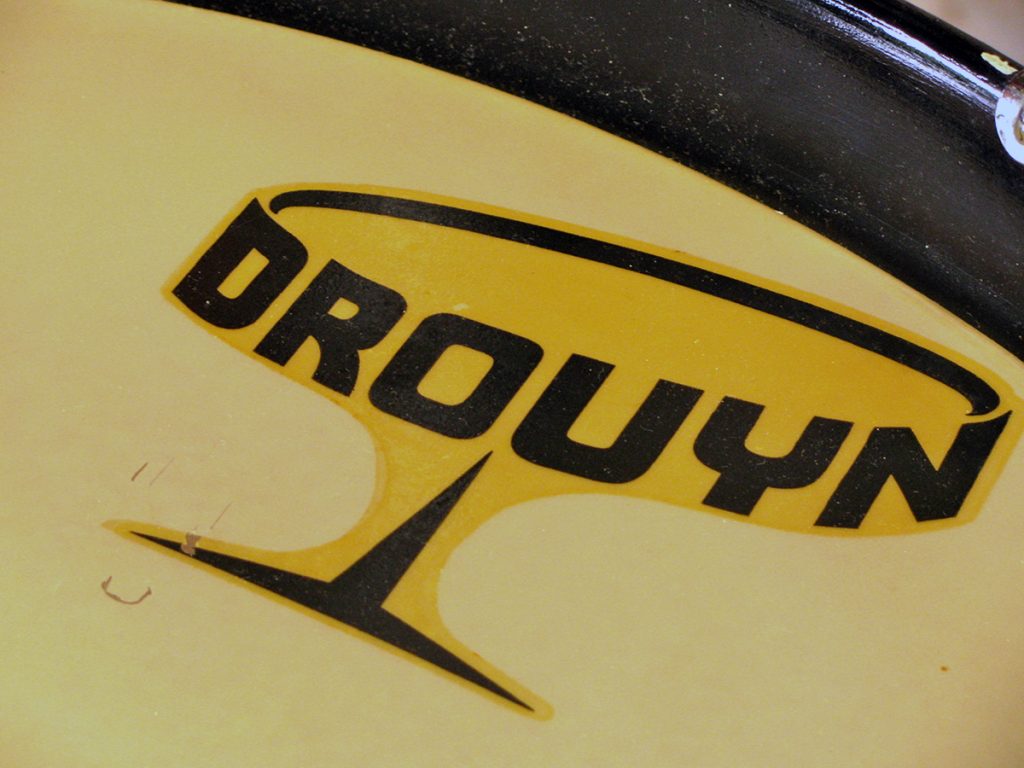
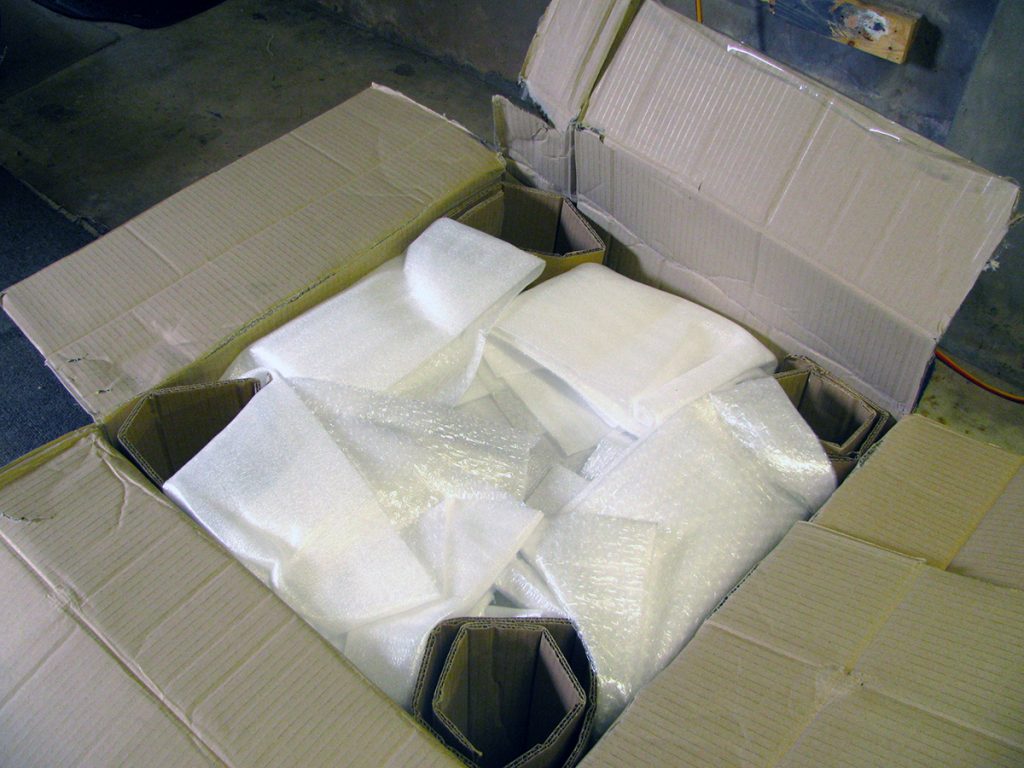
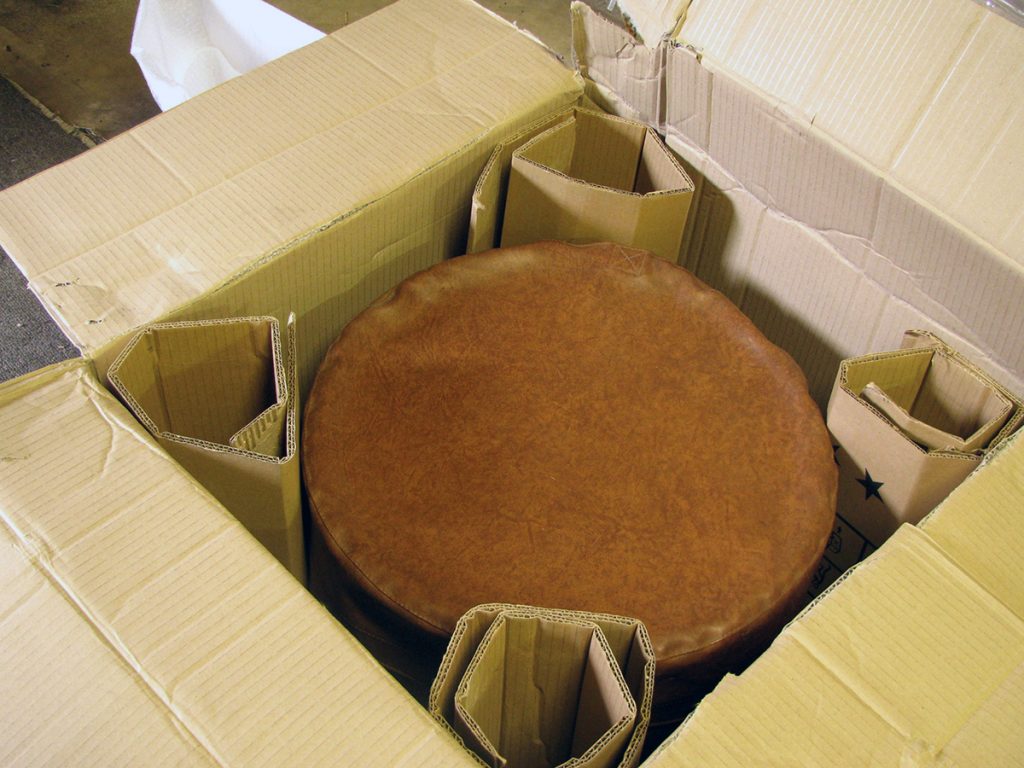



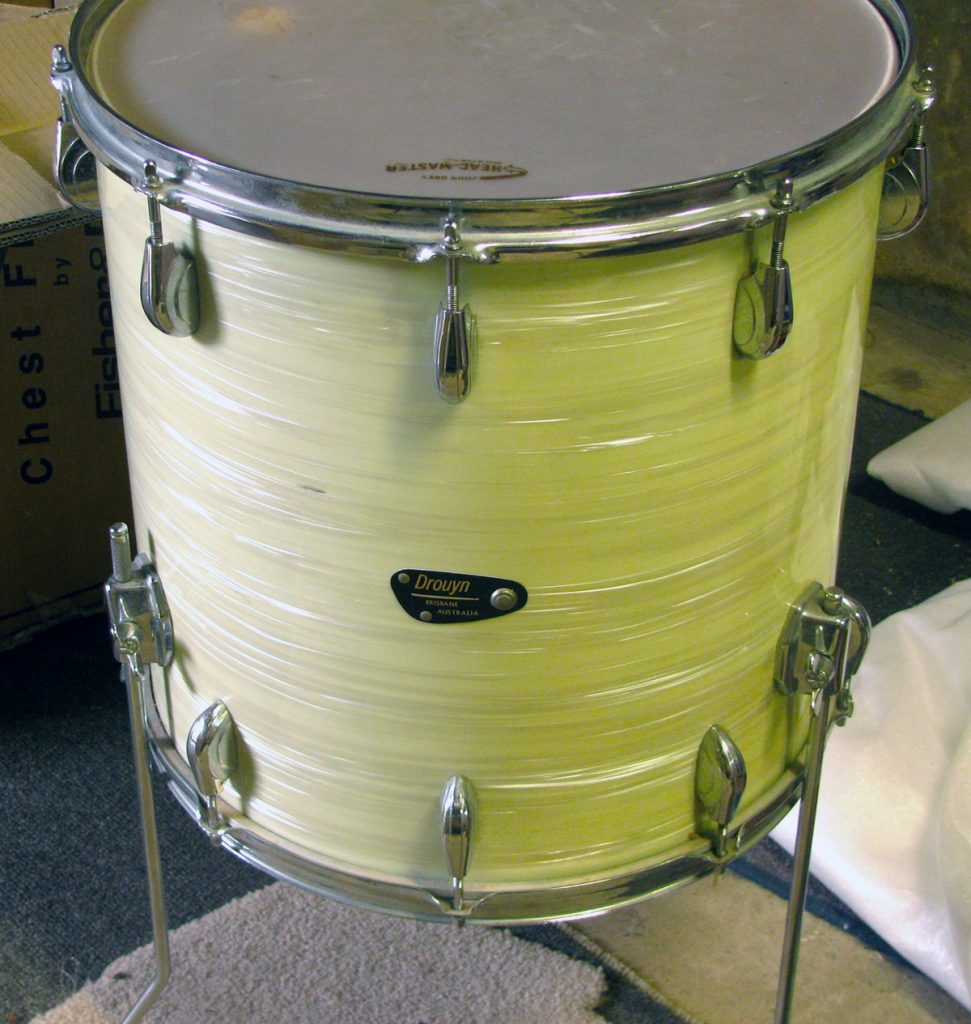
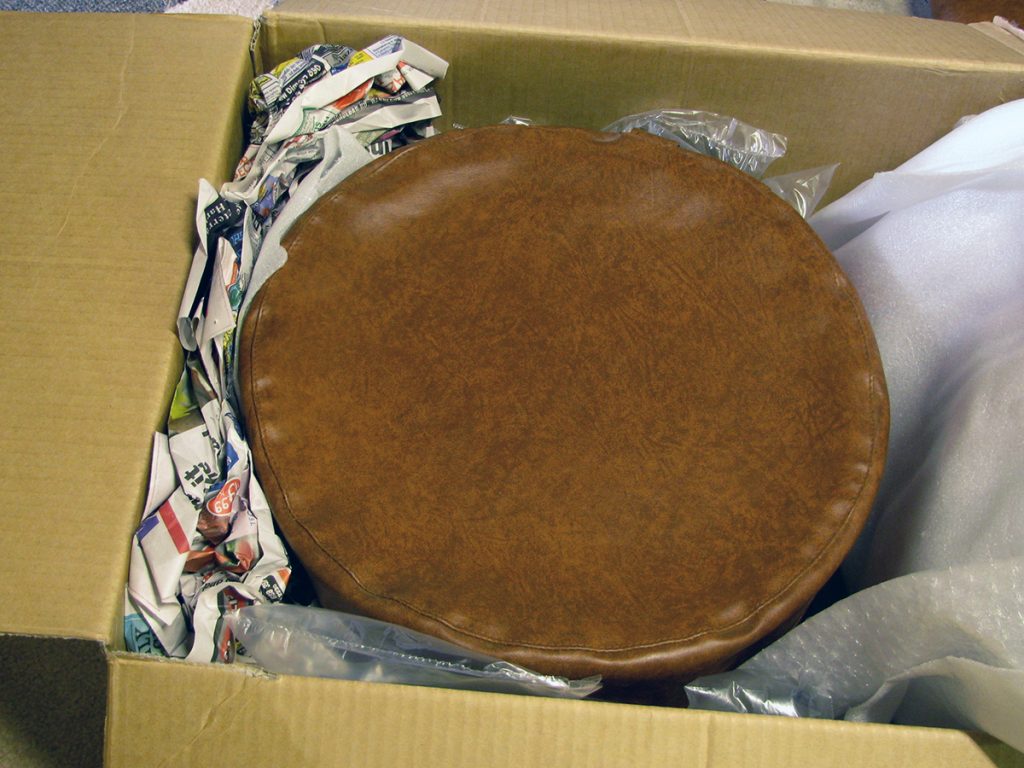
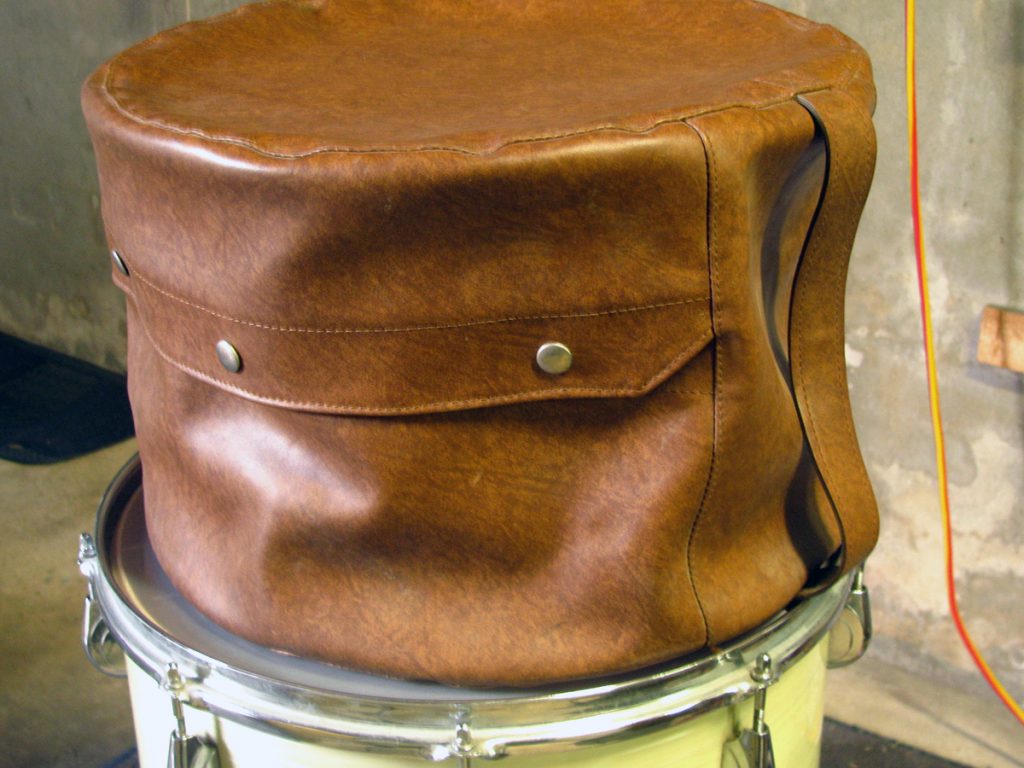
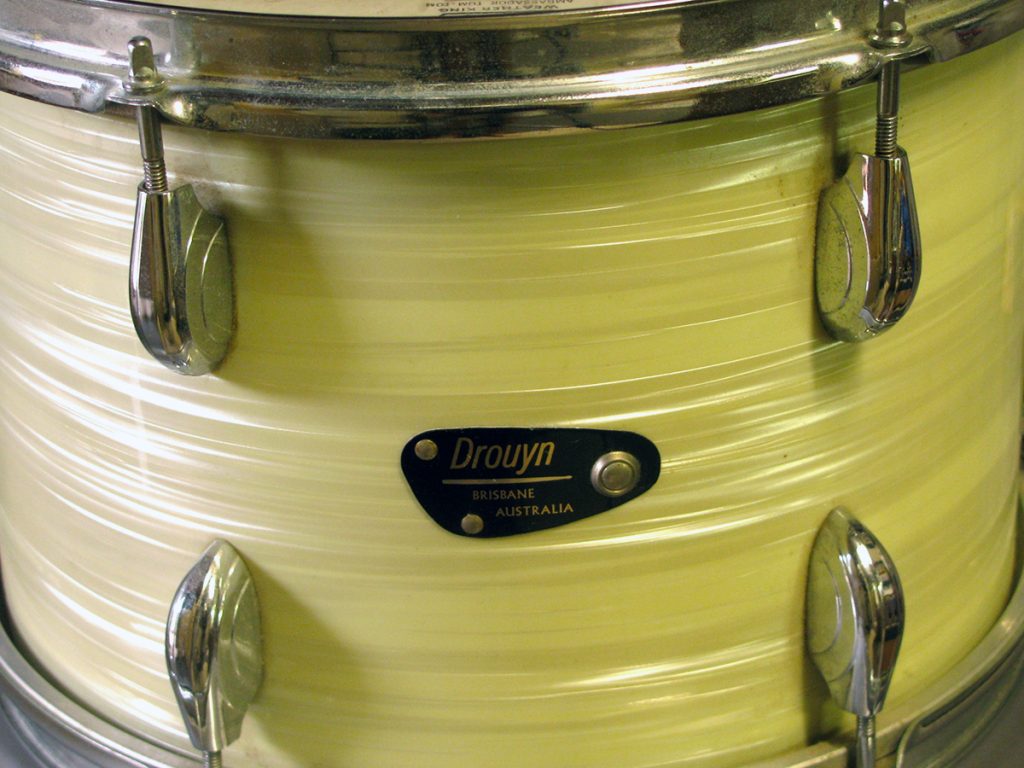

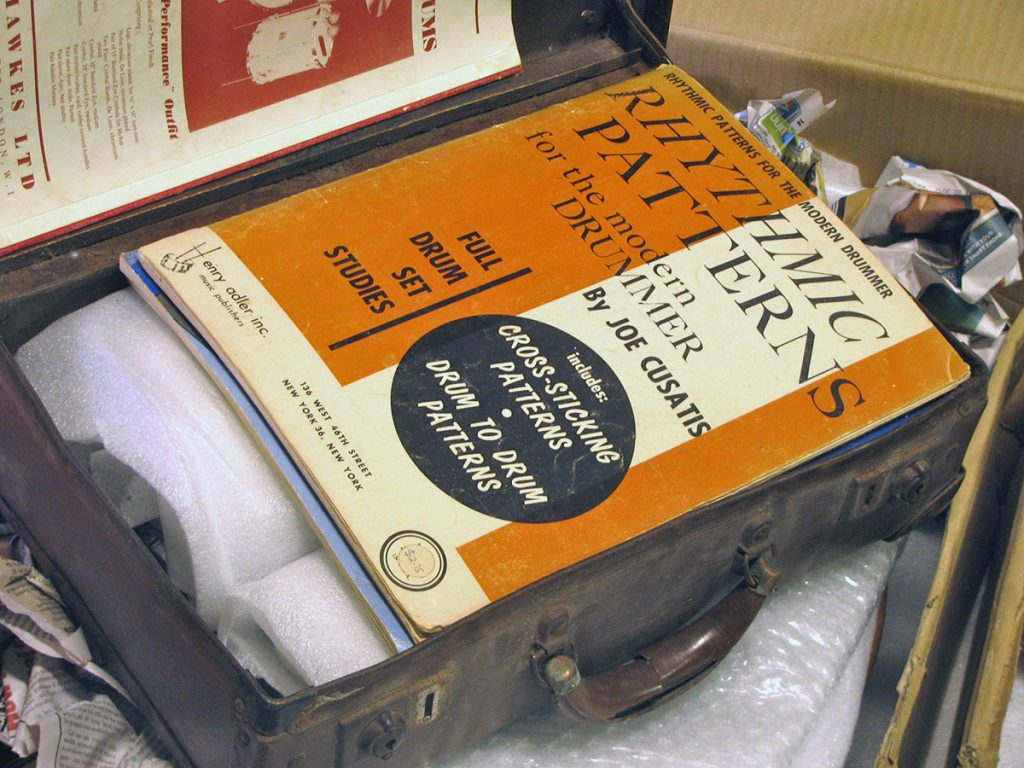
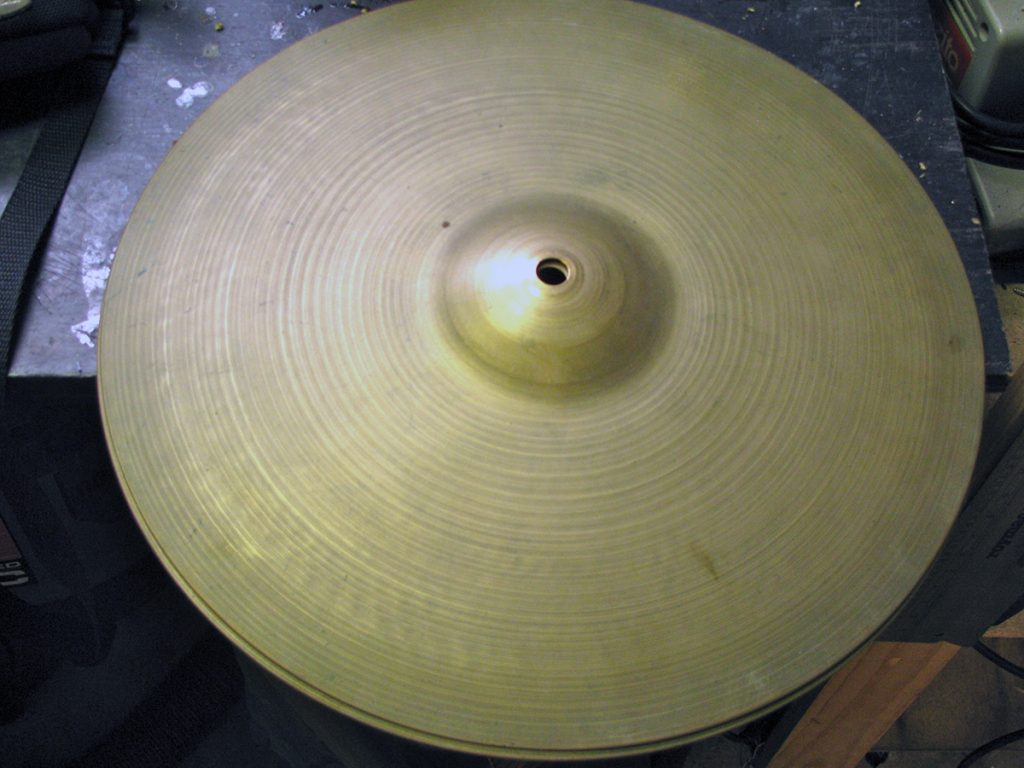
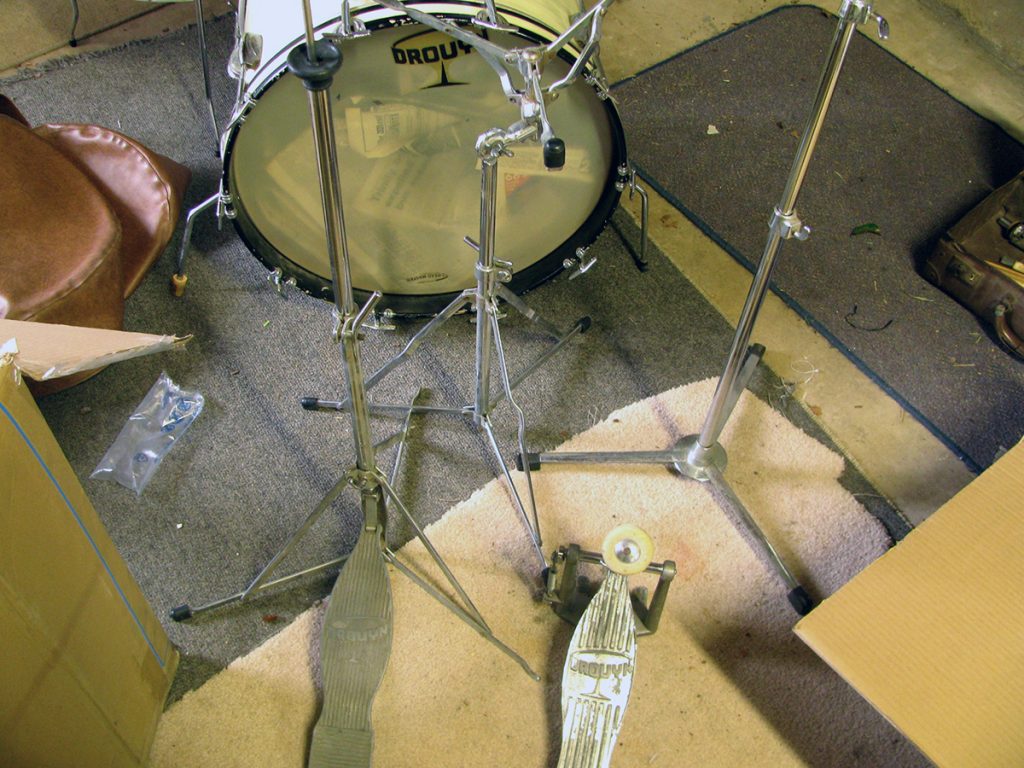

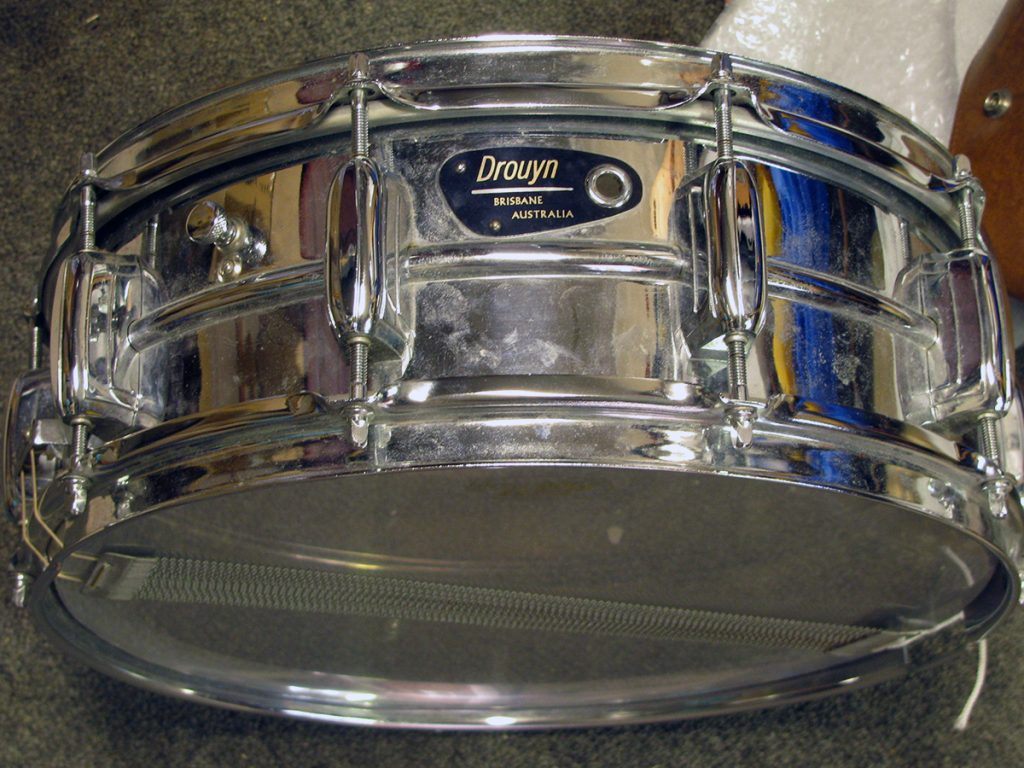
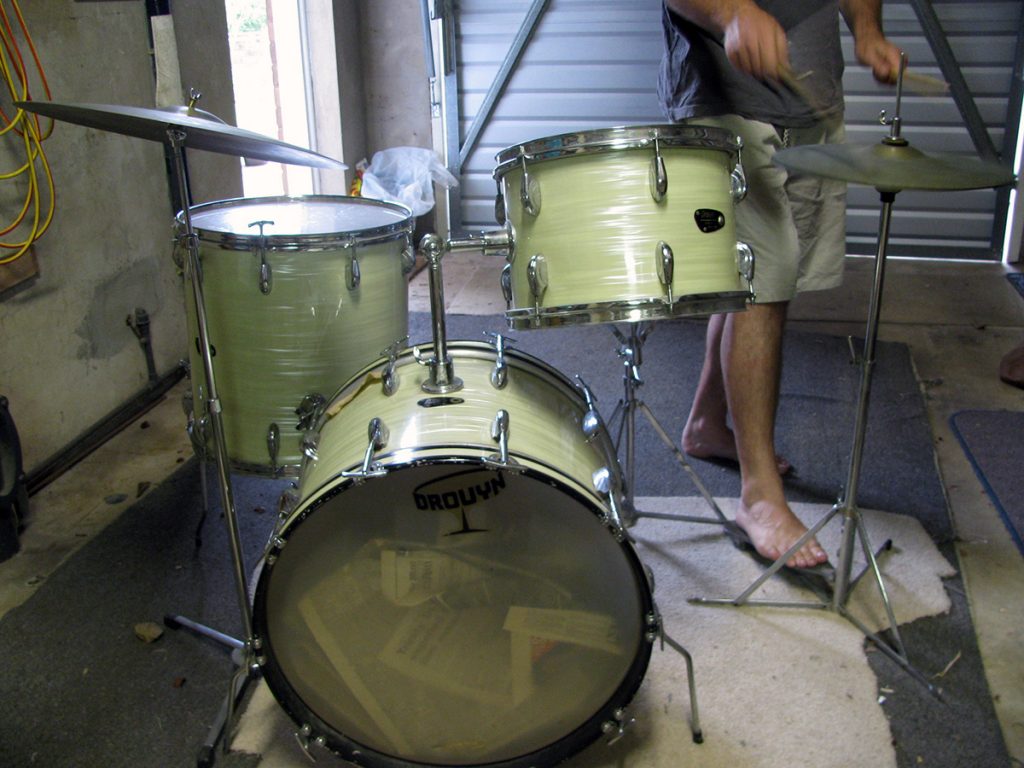
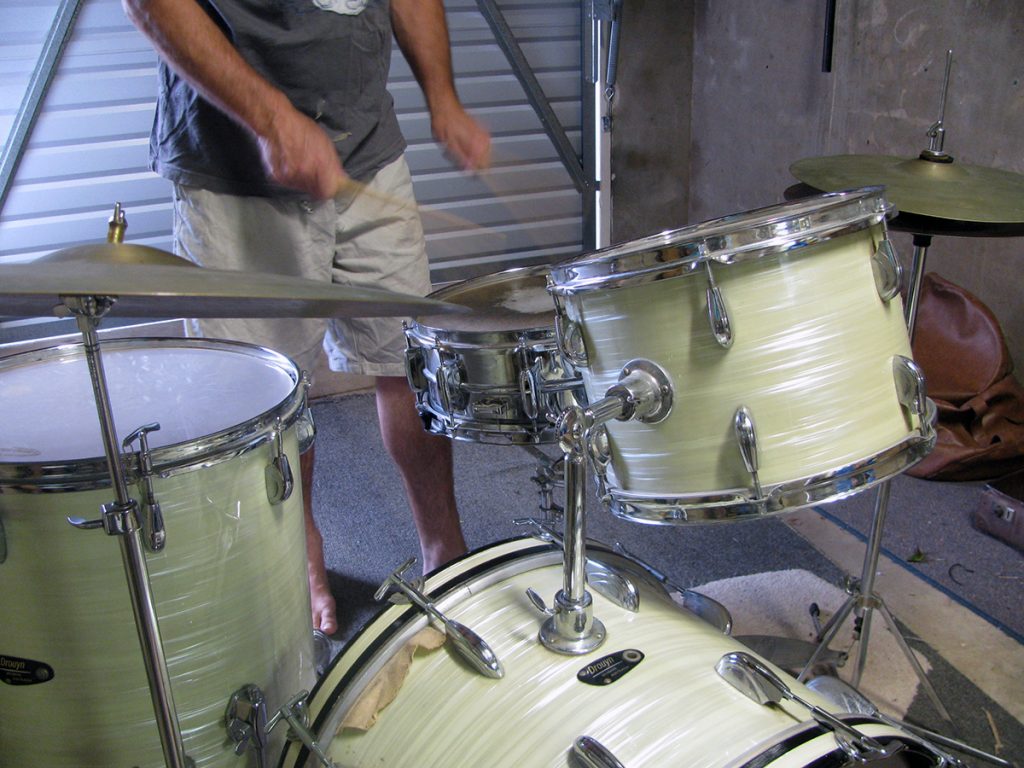
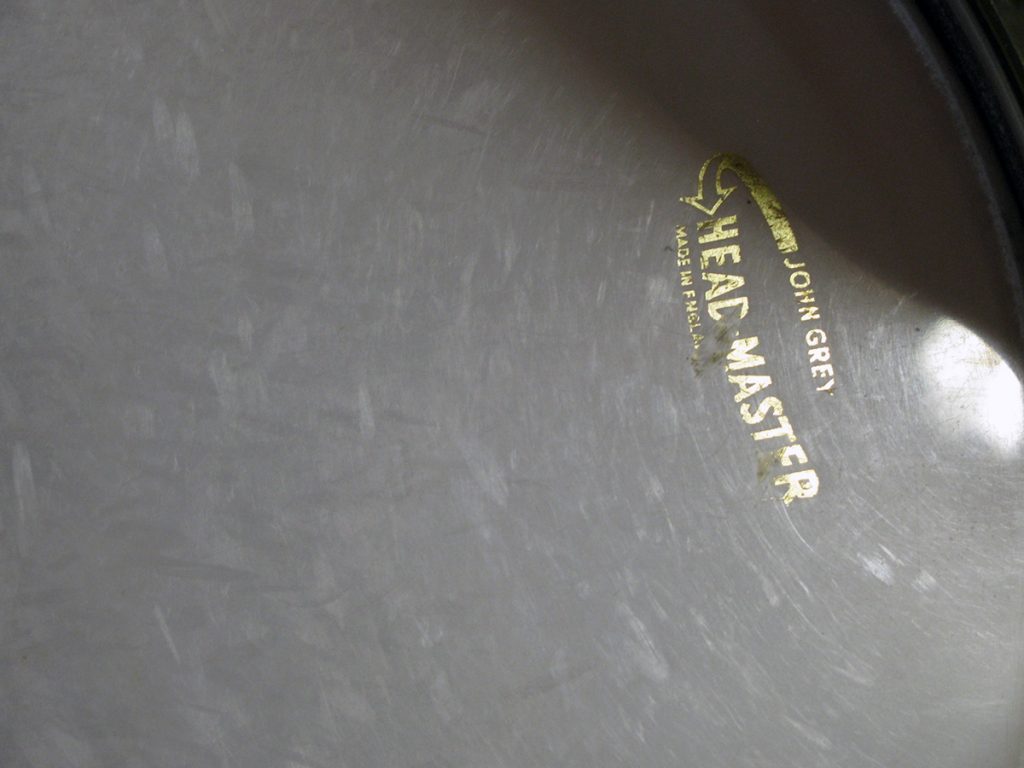
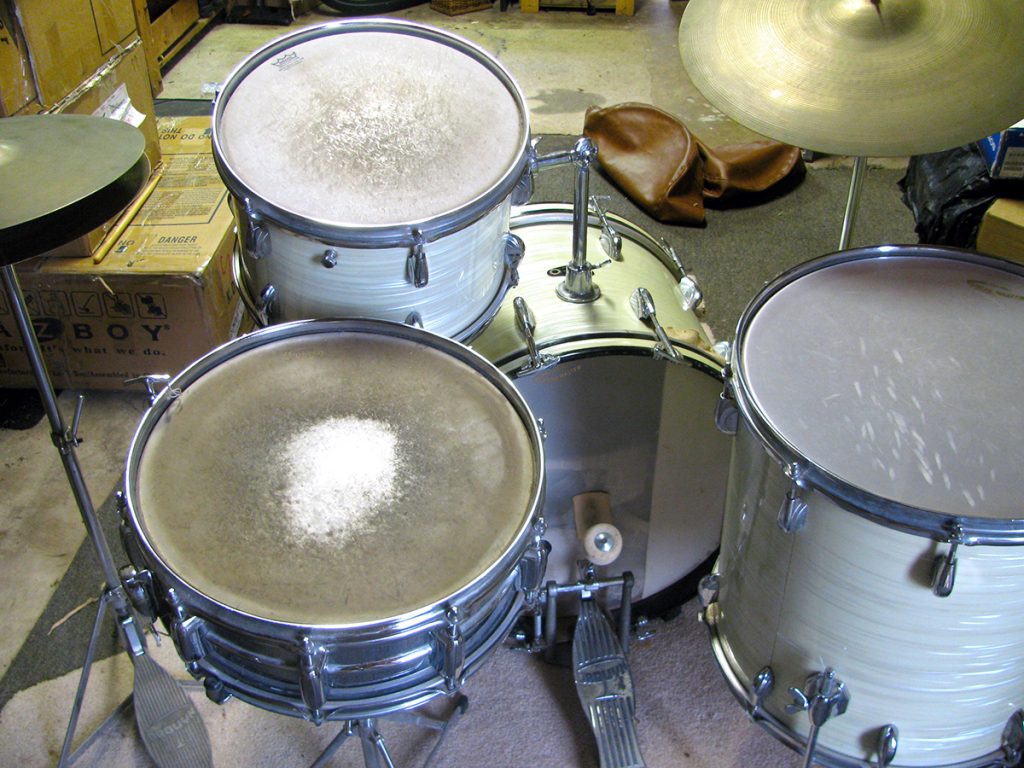
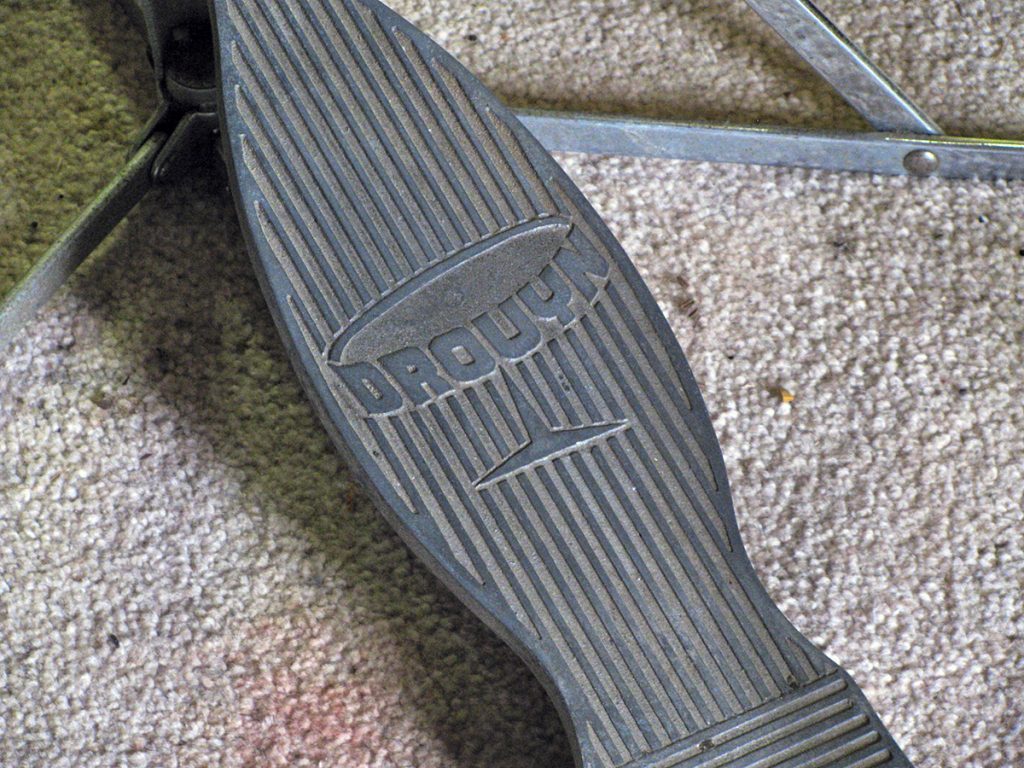
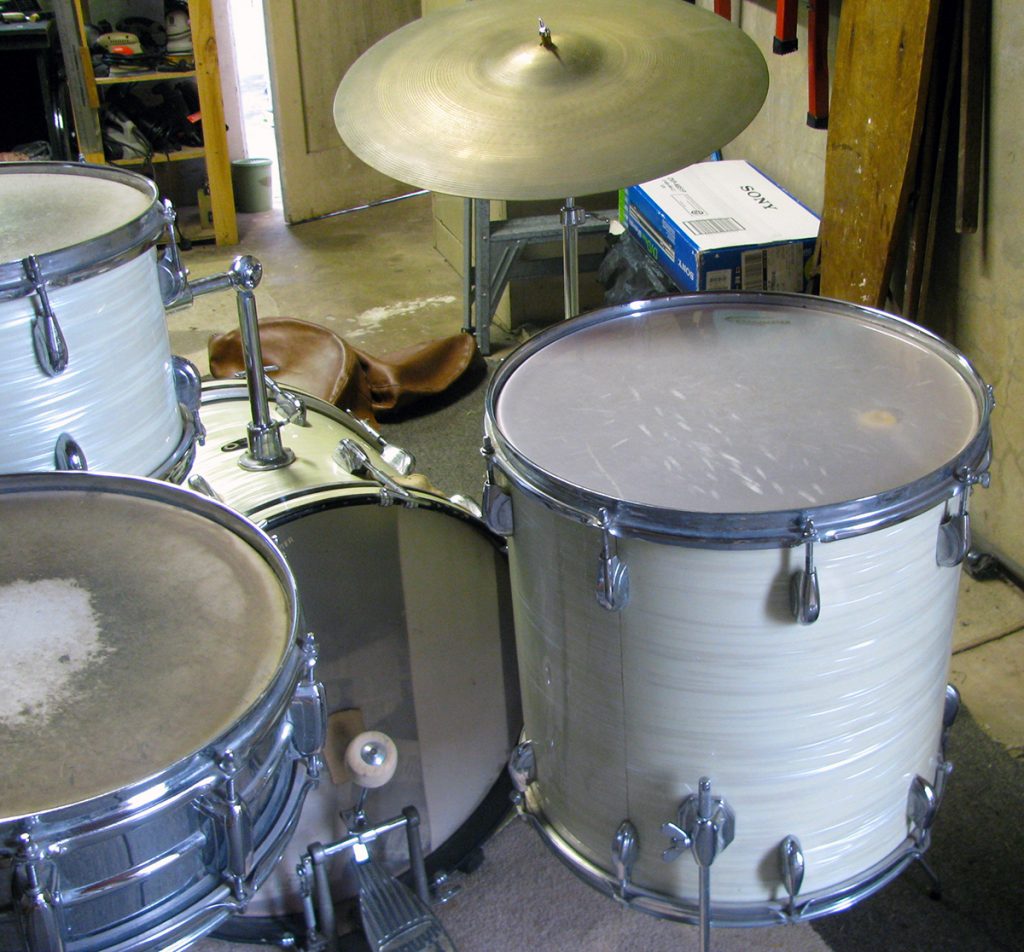
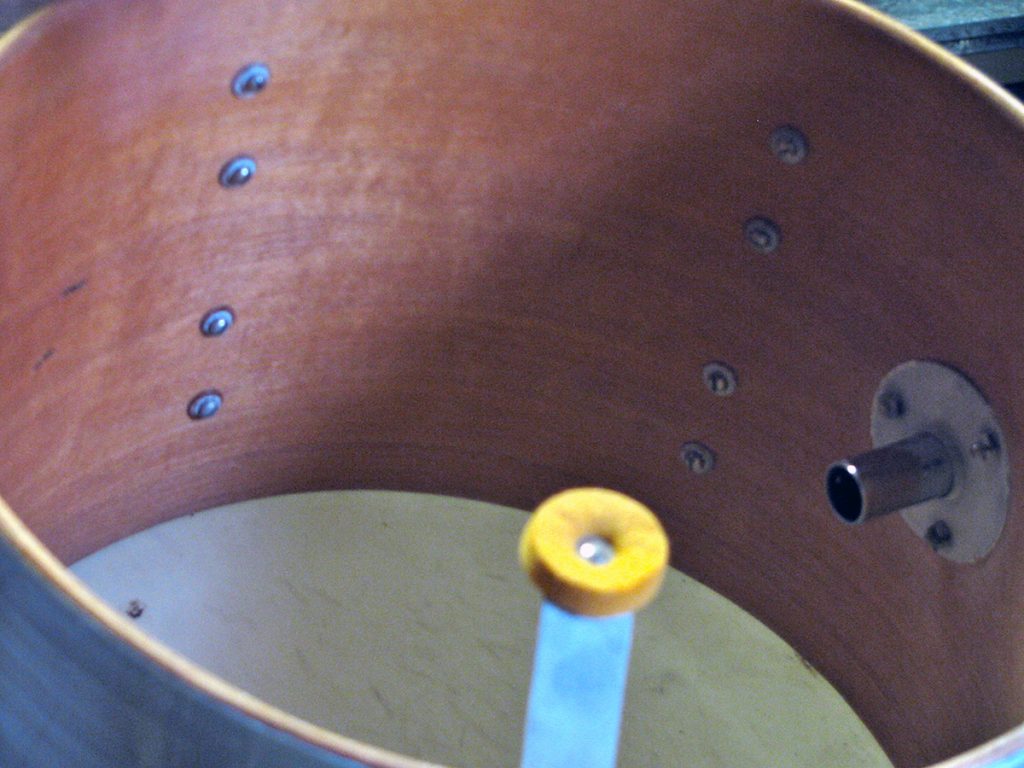
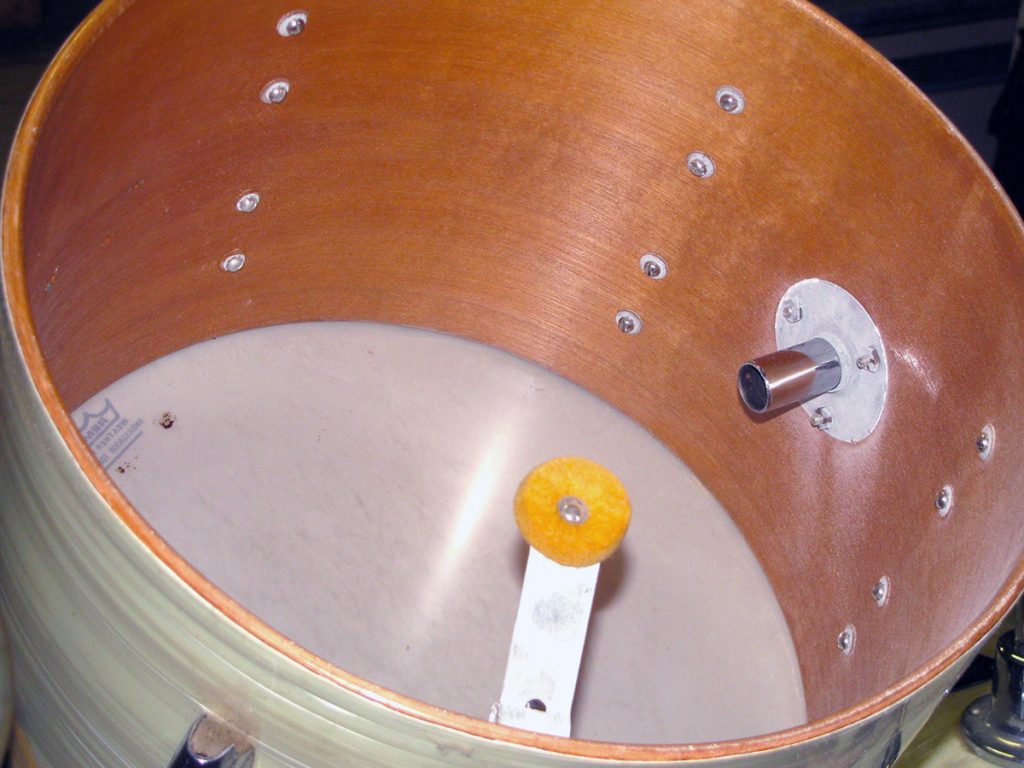

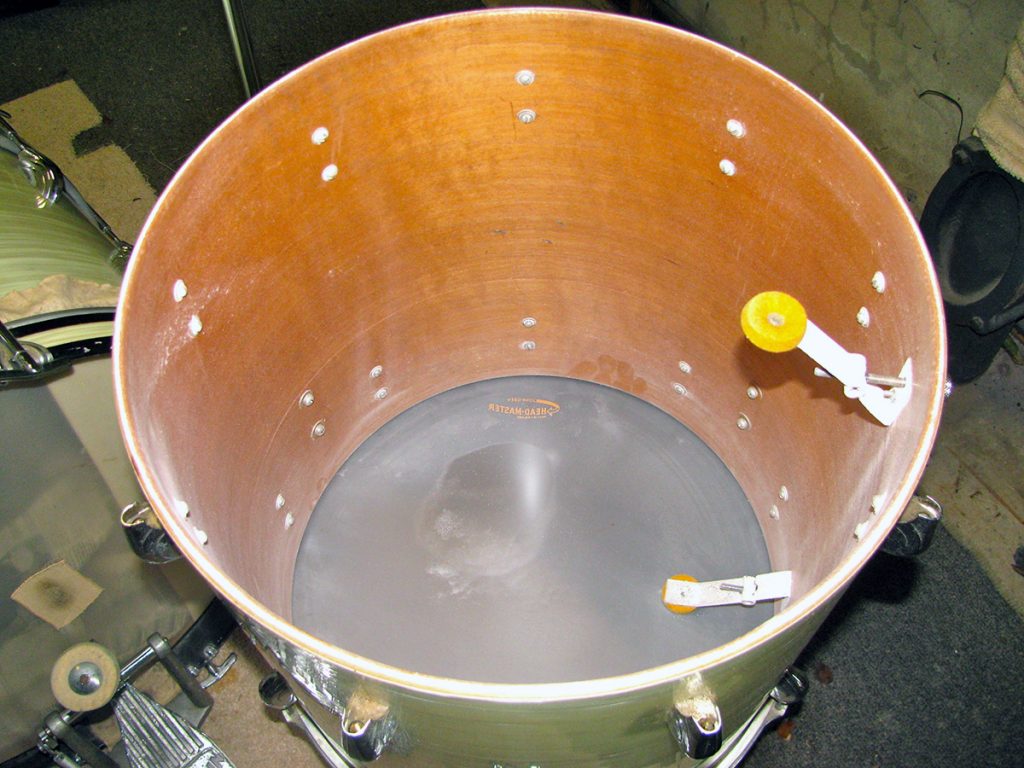
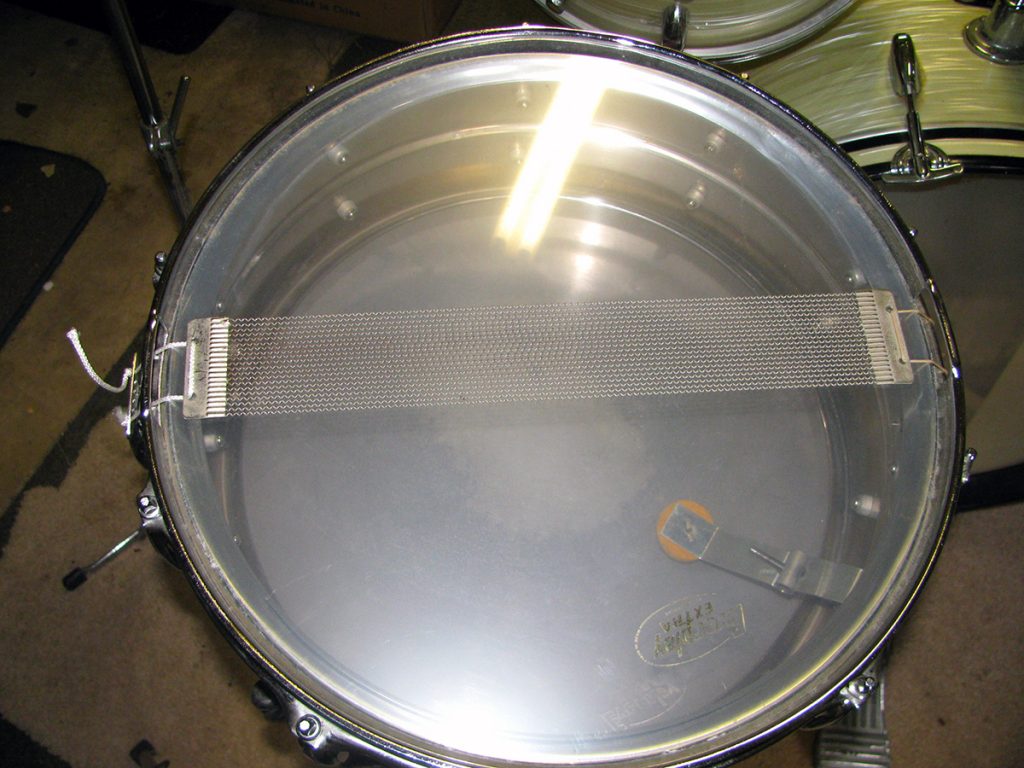
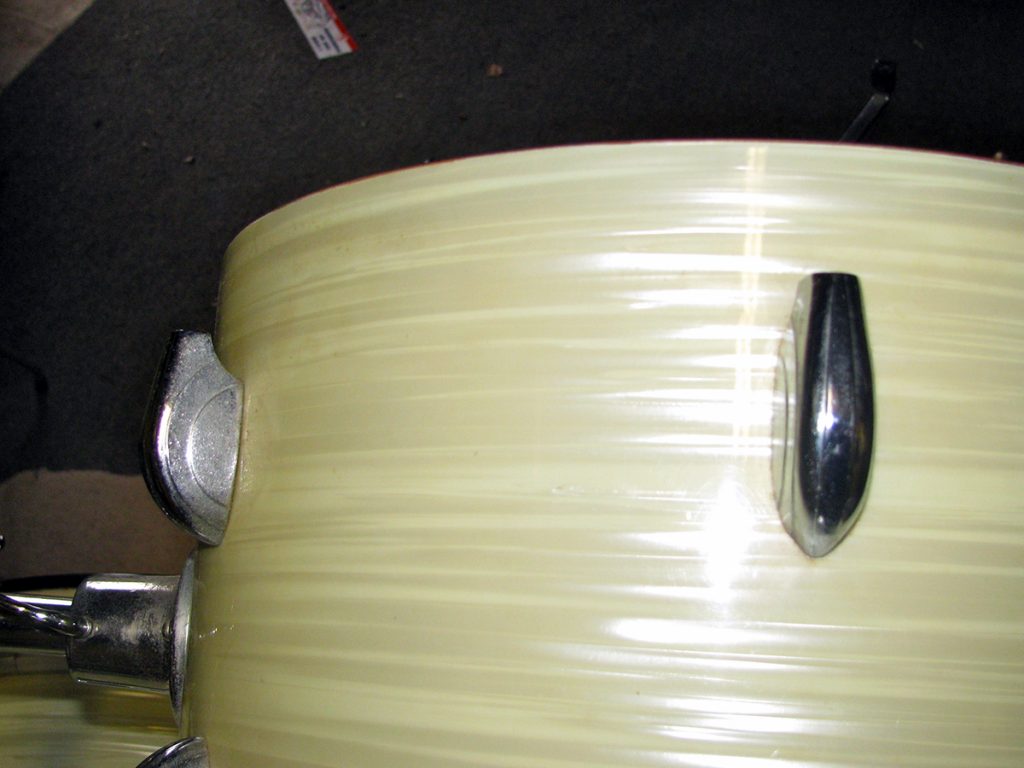
Close up
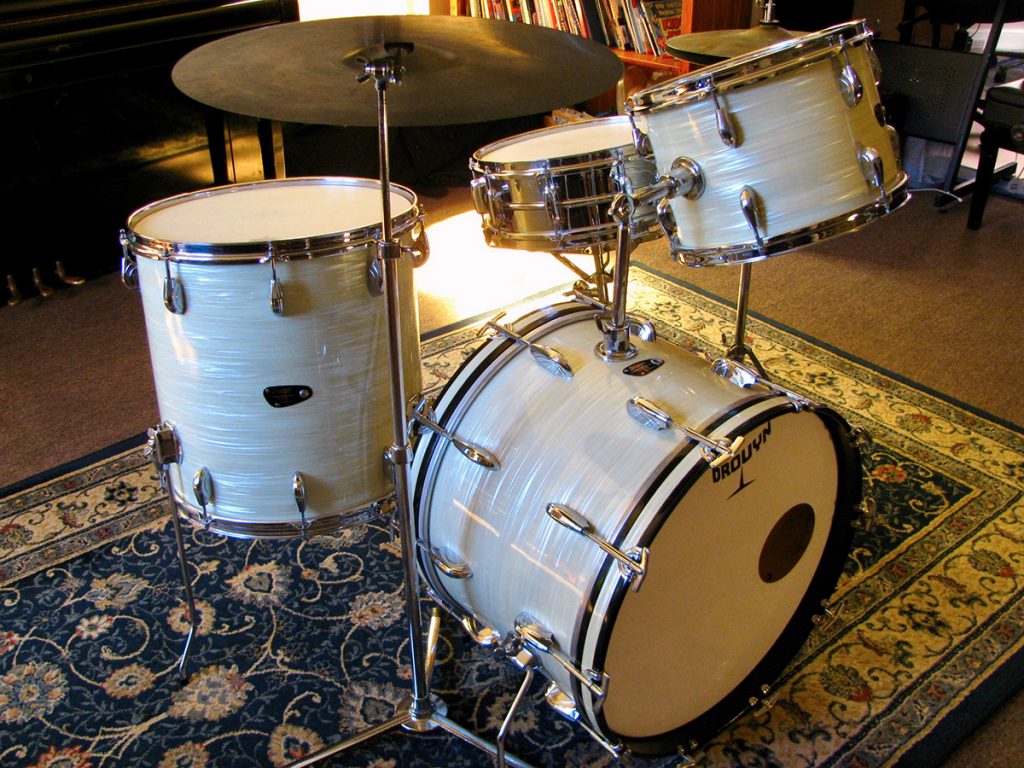
The kit comprises:
20″ x 14″ bass drum (B201 in the catalogue) with 20 lugs, foldaway legs.
16″ x 16″ floor tom (T400) with 18 lugs (Yes, you read that correctly – nine per side)
13″ x 9″ mounted tom (T404) with 12 lugs.
14″ x 5″ metal snare drum. (S100) Chrome plated aluminium, with 8 lugs.
Hi-hat stand, direct pull (A600)
Snare drum stand (A504)
Bass drum pedal (A602)
Tom holder (A616)
Cymbal stand (Premier flat based stand)
Two Drouyn tuning keys.
Extras:
Pair hi-hats: 14″ Zidjian New Beats.
Cymbal: 18″ Medium Super Zyn.
Accessories including a complete set of Vinyx cases in ‘Tobacco Tan’; drum books and two Drouyn tuning keys.
This kit came from Perth. It was made sometime around 1965, in Brisbane. It’s difficult to attach solid dates to Drouyn kits, unless you are the original owner. This configuration later became known as the “Bandstand” model.
It was originally sold from Theo’s Music, St George’s Terrace, Perth, (Australia) in 1965 or possibly early 1966. This information came from paperwork I found with the drums. I called the store and they said they had moved not long after that. The hi-hats have a price in £ faintly written on them. Australia moved to decimal currency in 1966. I guess it to be a fairly early Drouyn set, after they ceased production of the earlier Dandy line. It has folding legs (they later became retractable) and square tension rods. (The kit I owned from the 70’s had slotted ones) Possibly because it was cased and kept in a dry climate, it was in excellent condition. The S100 snare drums are prone to pitting, but this one had none.
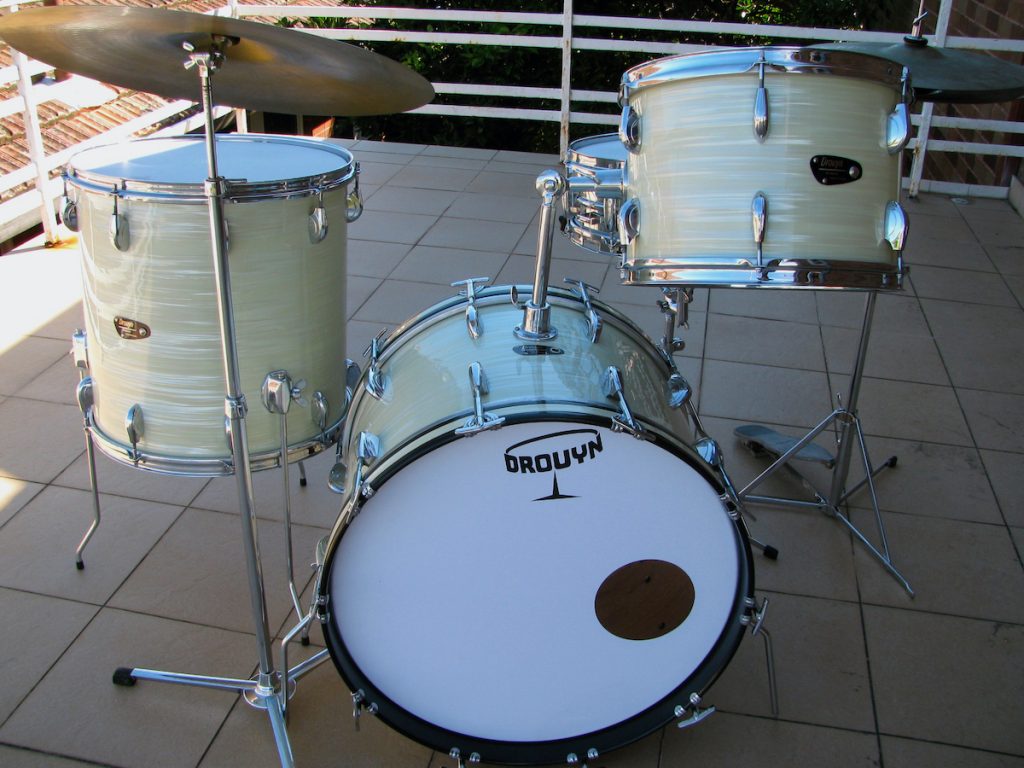
The kit after cleaning.
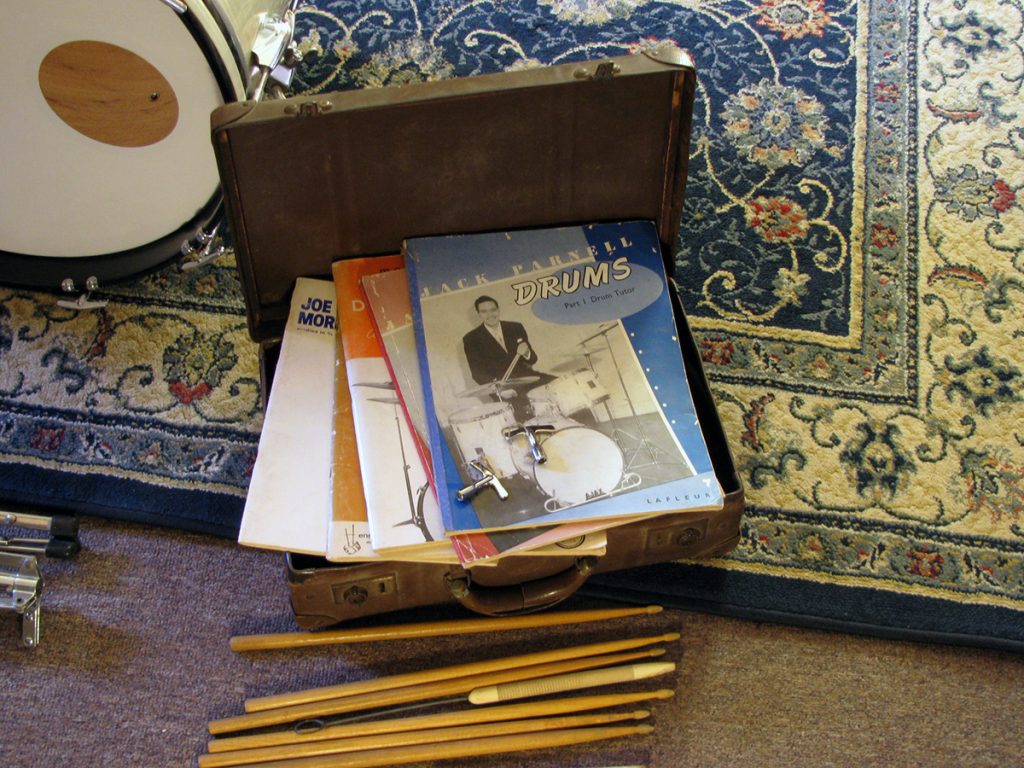

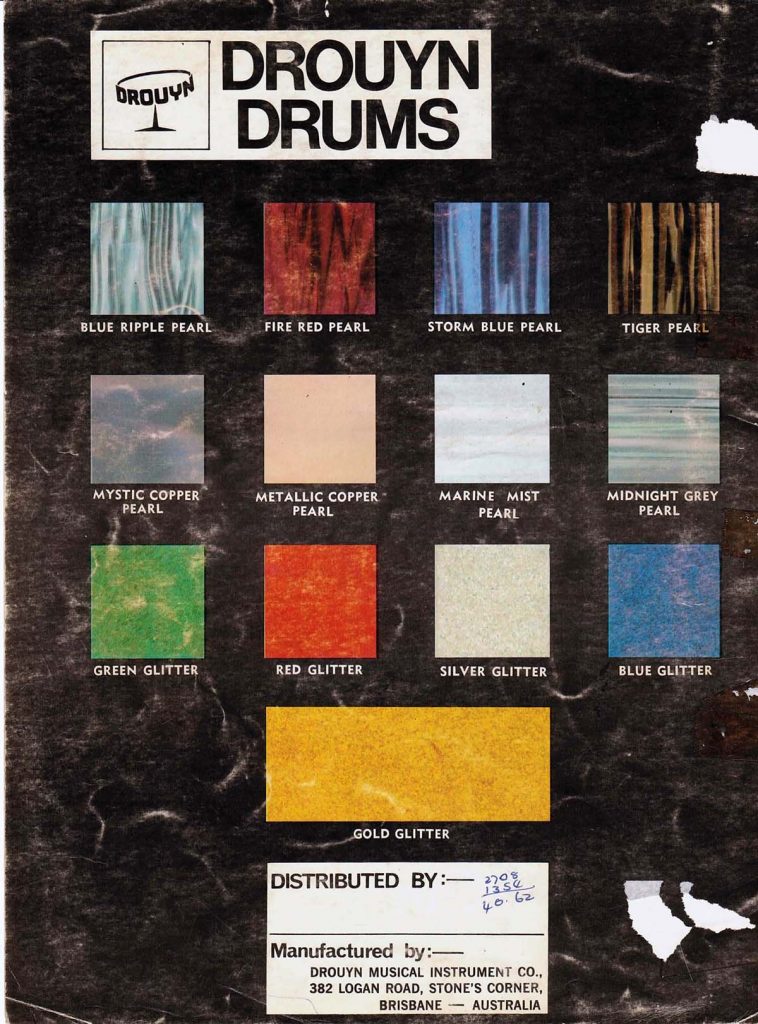
The wrap.
The wrap is quite thick and very good quality. The colour looks like a popular finish used in the 1960’s called “White Ripple”. It has faded quite uniformly. The exact source of the wrap is unknown. It’s been said that Drouyn wraps may have come from an Italian drum manufacturer, Meazzi. Their ‘Hollywood’ drum sets were quite popular. There is no overlap of the wrap – the edges butt together.
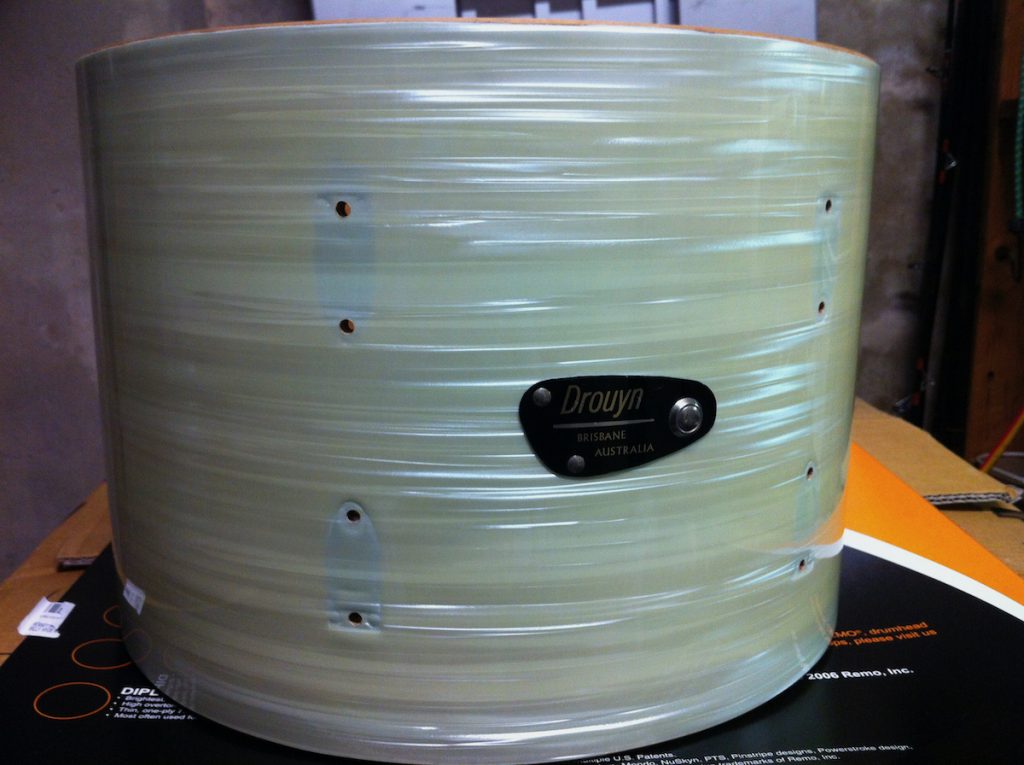
I found this sample by Meazzi called Perla Venata Bianca : “White Veined Pearl” (A type of marble) It’s the second sample below. The fact that Drouyn may have used a wrap from Italy is another interesting piece of the puzzle.
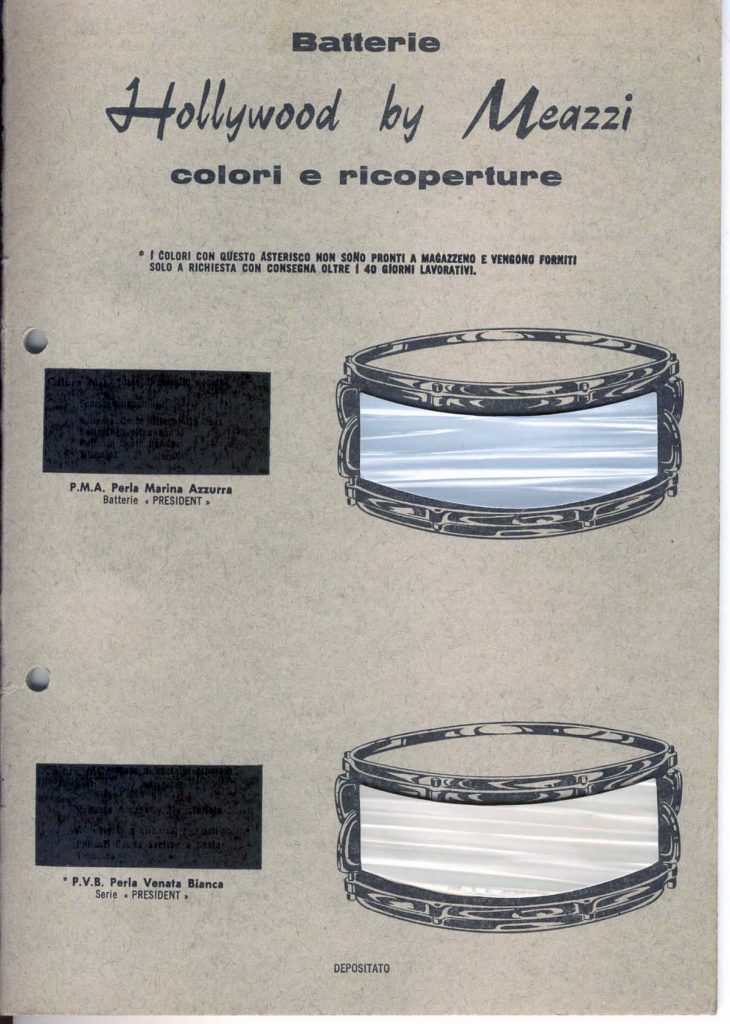
Bass drum.
The bass drum is the Professional Series B201 and measures 20″ wide by 13 11/16″ deep. It was sold as 20″ x 14″. The shell is 4 or 5 plies of the same timber and looks to be Rose Alder. When the hoops were stripped, they turned out to be a different, lighter wood with a wider grain. They may be Huon Pine. The lugs are larger versions of the “snail” designs on the toms. The tees and claws are small, quite heavy and very solid. The lugs look very similar to an old Premier design. The tom mount is very simple and though it looks a little home made, functions well. The mystery on the bass drum is the leg mounting blocks. They are copies of the popular 1960’s Ludwig style; but look Japanese. I had to repair two with stripped threads. In the process of finding a helicoil for it; I discovered that the mounting screws are 8.5mm metric.

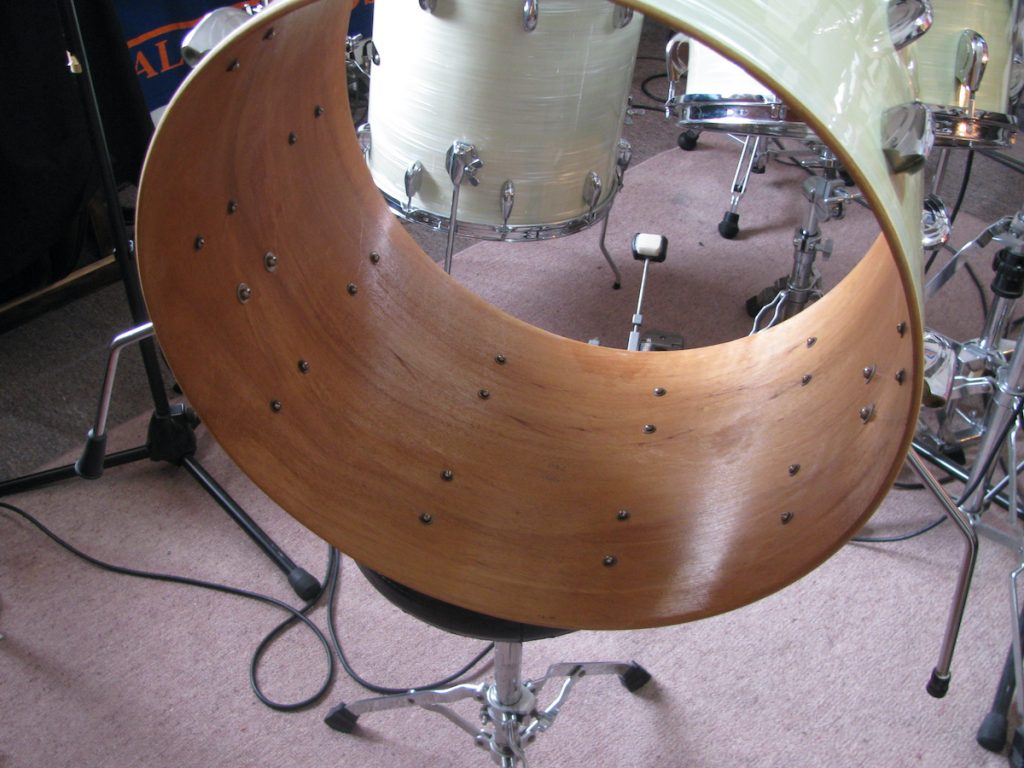
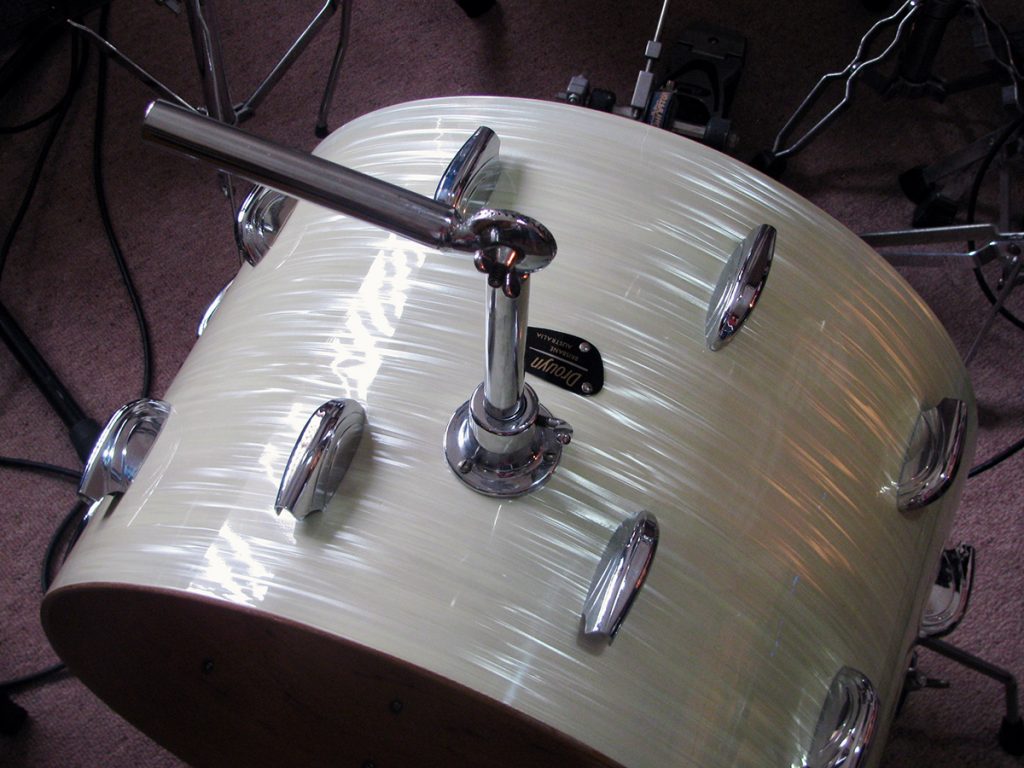

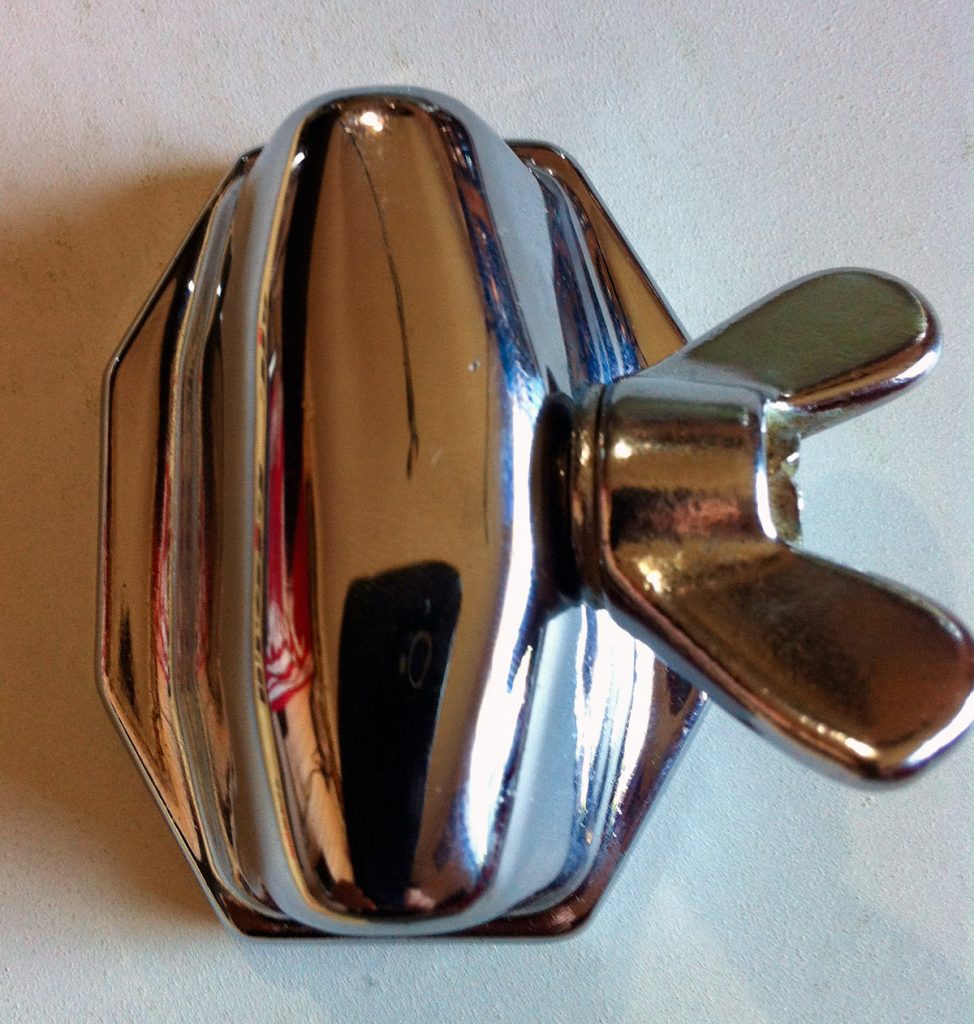
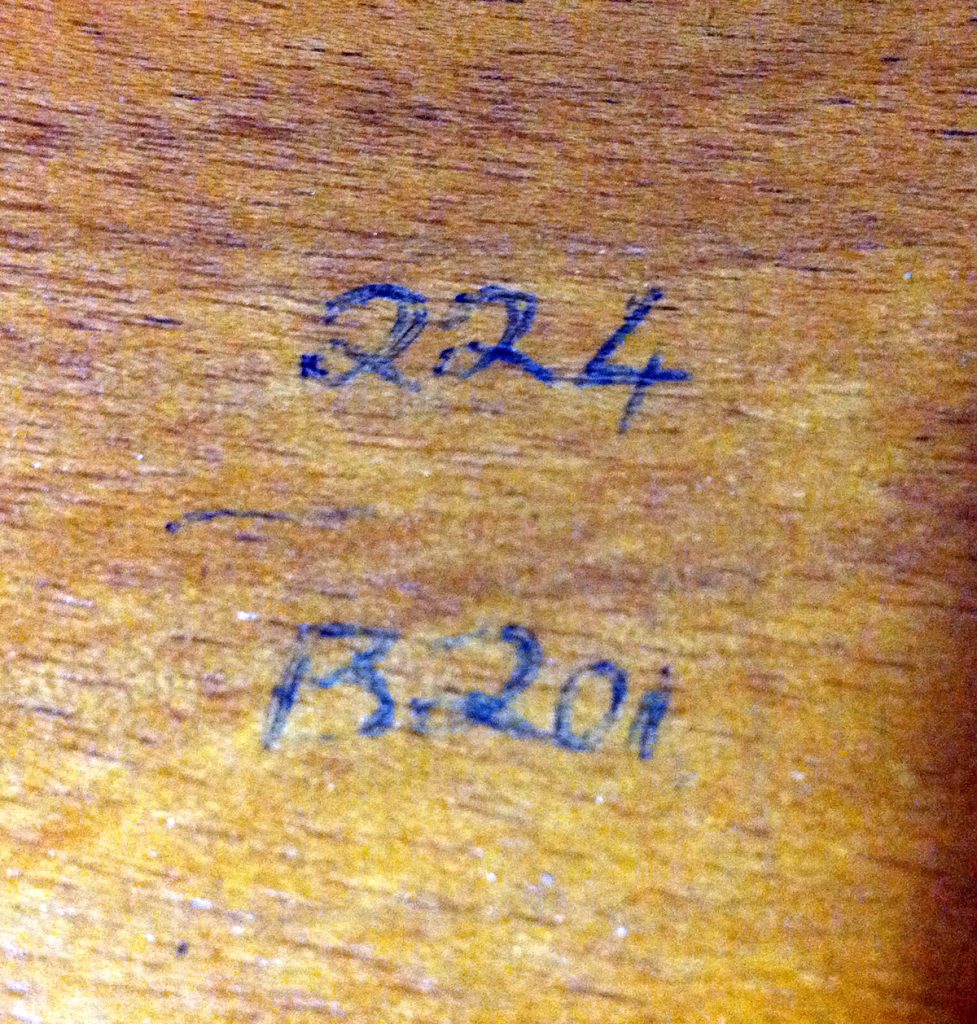
Drouyn actually became well known in Australia for making a style of bass drum previously unseen in other drum sets. These bass drums were typically 16″ or more deep. These drums were sometimes called “cannon” bass drums. Gretsch and Ludwig had made deep bass drums before. Later, these sizes became common in modern drums. But at the time, they were quite revolutionary in Australia.
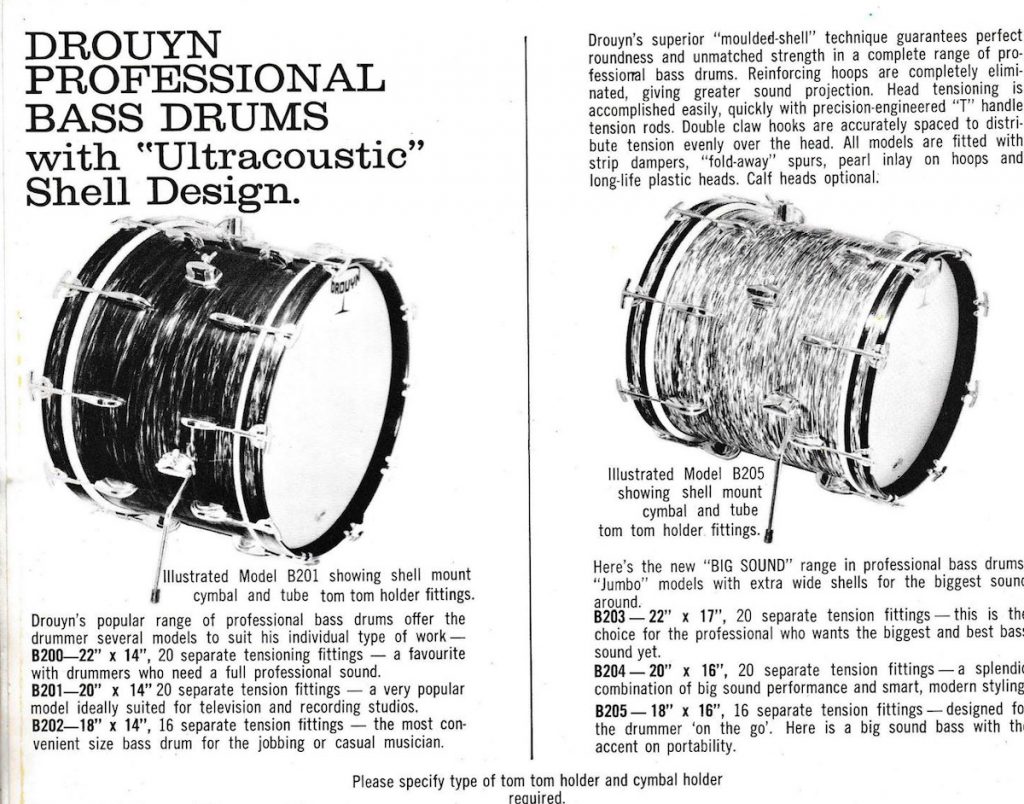
Floor tom
The floor tom is model T400. It has one feature which stands out – 9 lugs top and bottom. A few companies including Sonor, did this too for a while. This makes sense as far as balance goes. Since a floor tom sits on three legs, they are evenly distributed between the 9 lugs. Should you happen to lose a top or bottom rim on one of these drums – you’re in quite a bit of trouble. The numbers written in this drum provided further clues on the serial number format. Job lot “6542” could mean 1965, #42, as the 13″ drum has “6543” included in its numbers. It has top and bottom internal dampers.
This drum shell appears to be three ply. The mounting blocks are similar to the bass drum, although there does seem to be a slight angle, which means they need to be mounted the right way up. The rims are the typical lightweight flanged version which Drouyn made. The interior of this drum is particularly nice.
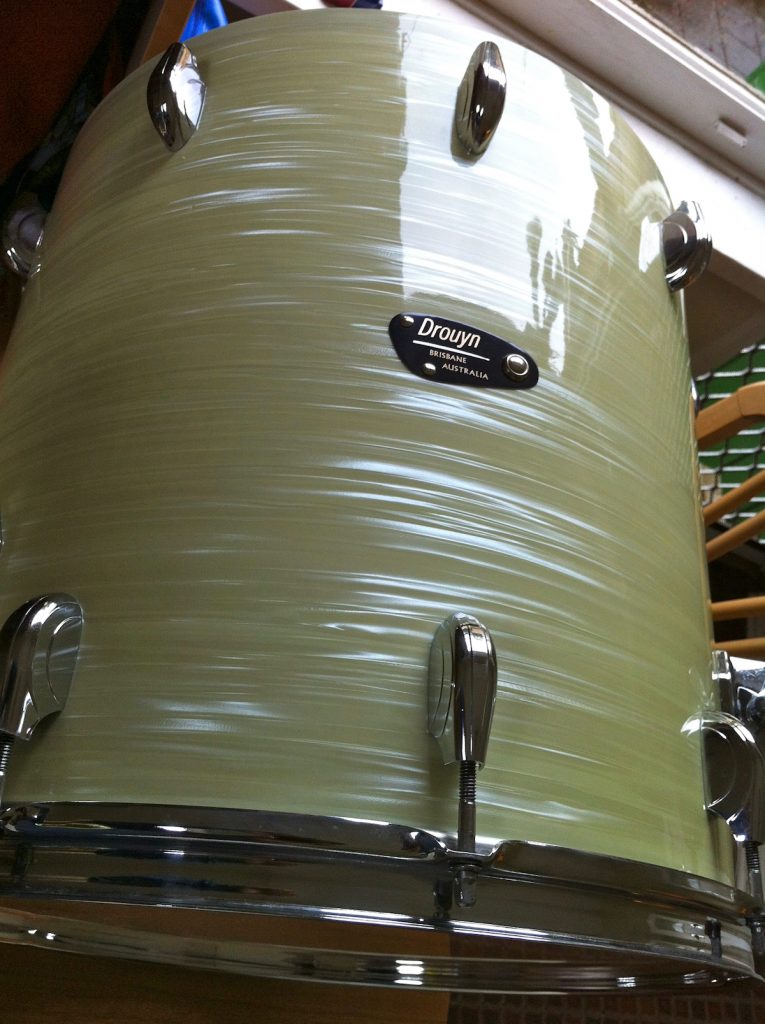
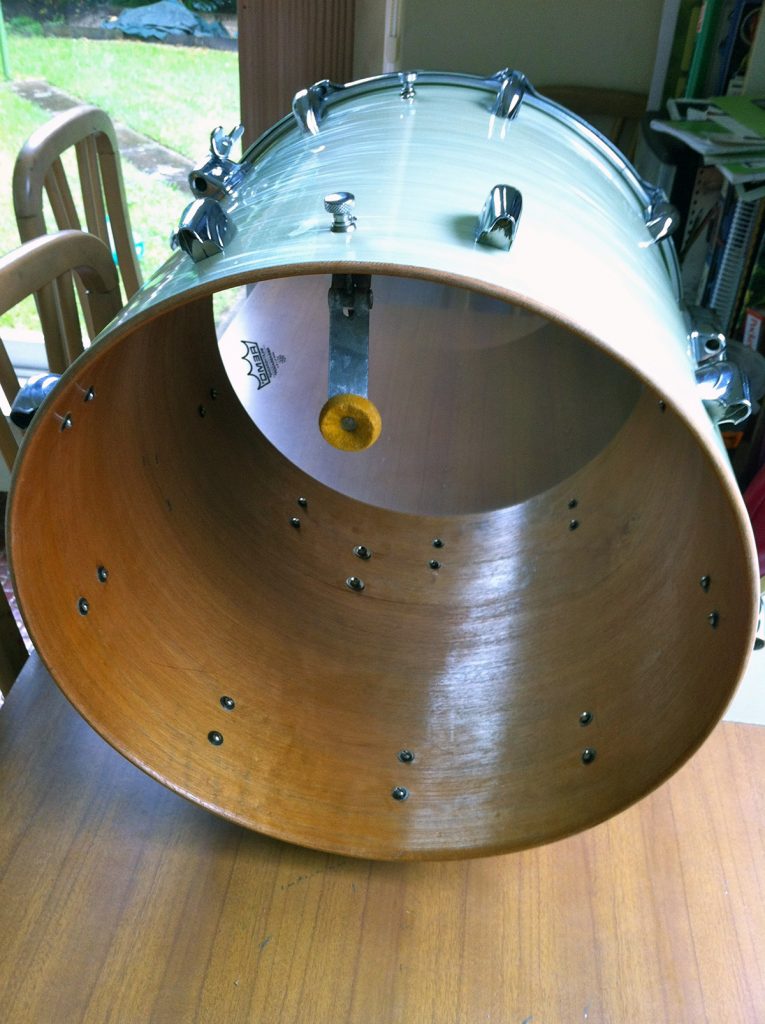
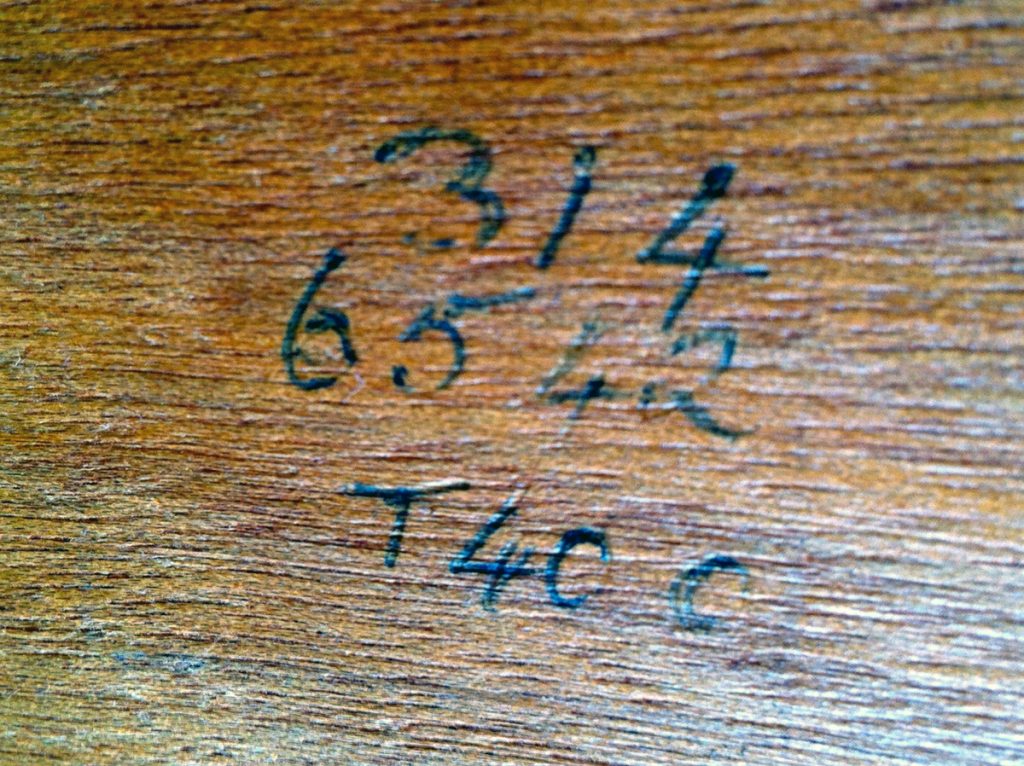
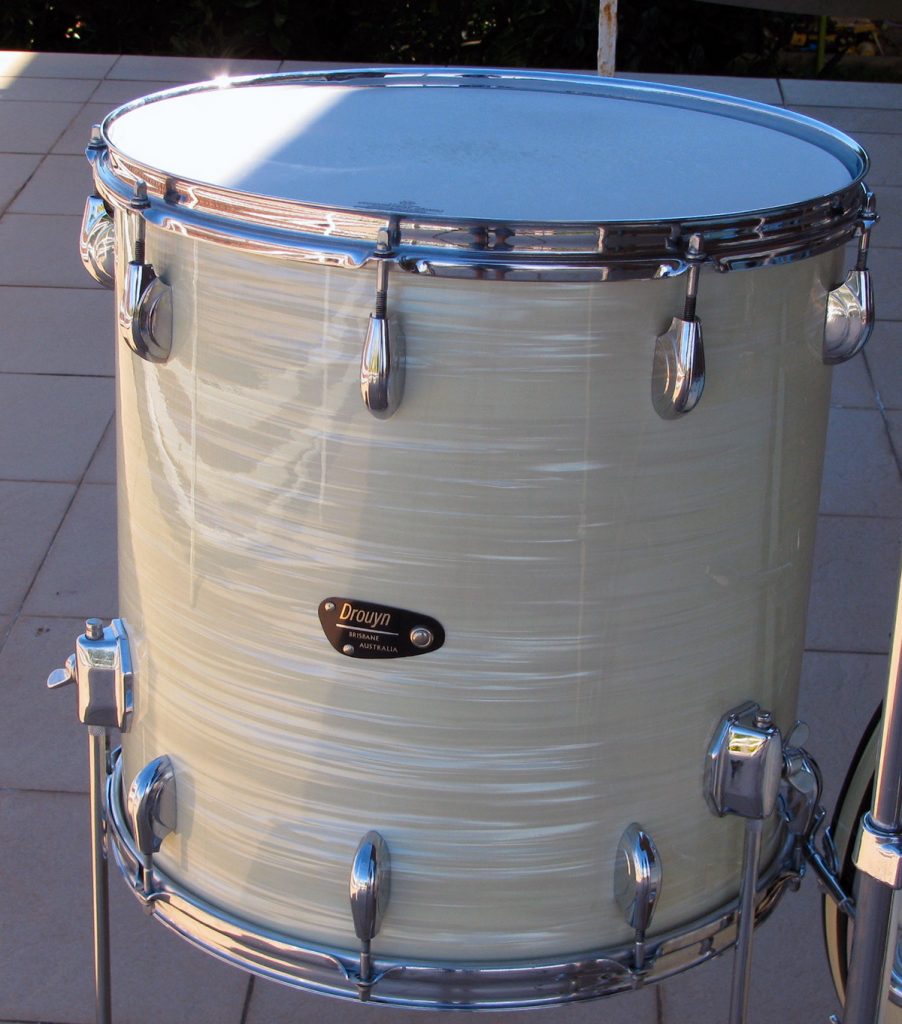
Mounted tom
The mounted tom is model Drouyn T404 and measures 13″ x 9″. It’s a three ply drum; with dampeners top and bottom; with no air vent. These plies seem slightly thicker than the bass drum. It’s in nice condition. The serial numbers follow on (in part) from the floor tom.

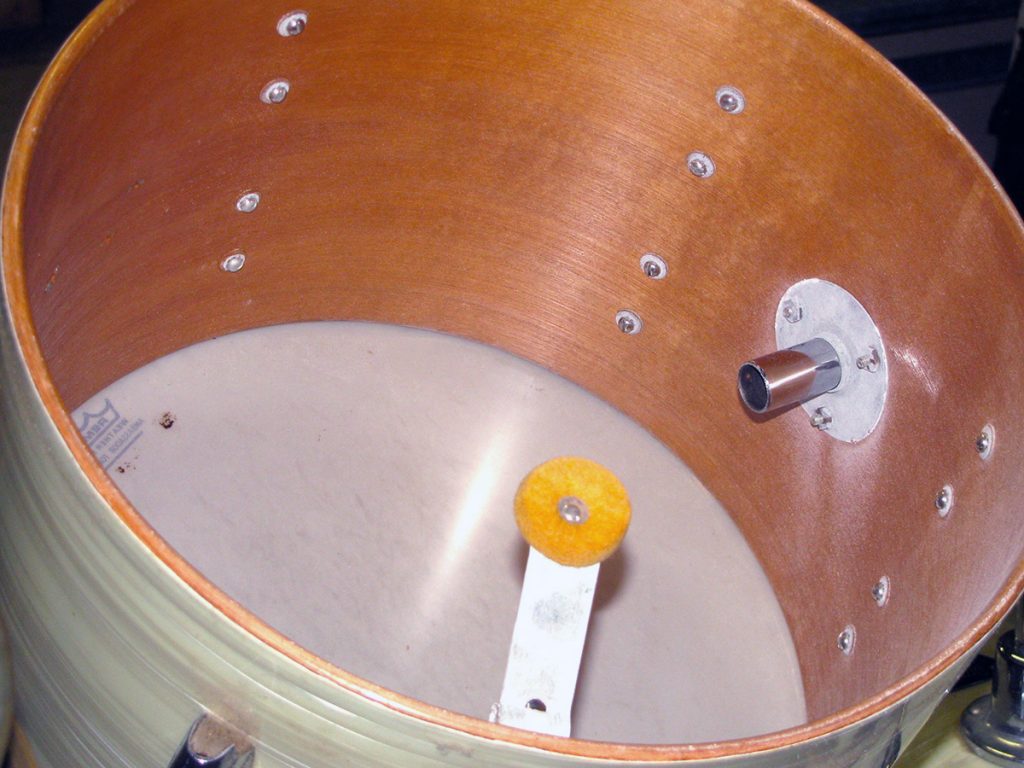
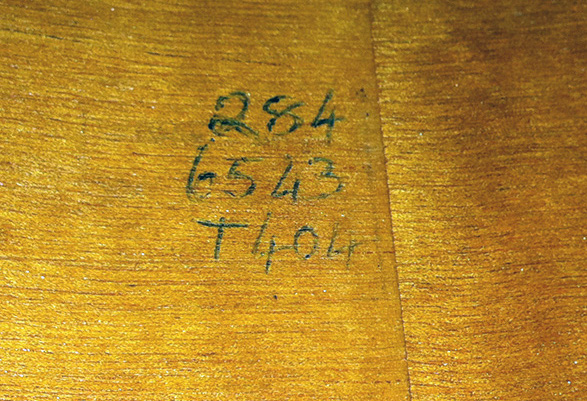
Hardware

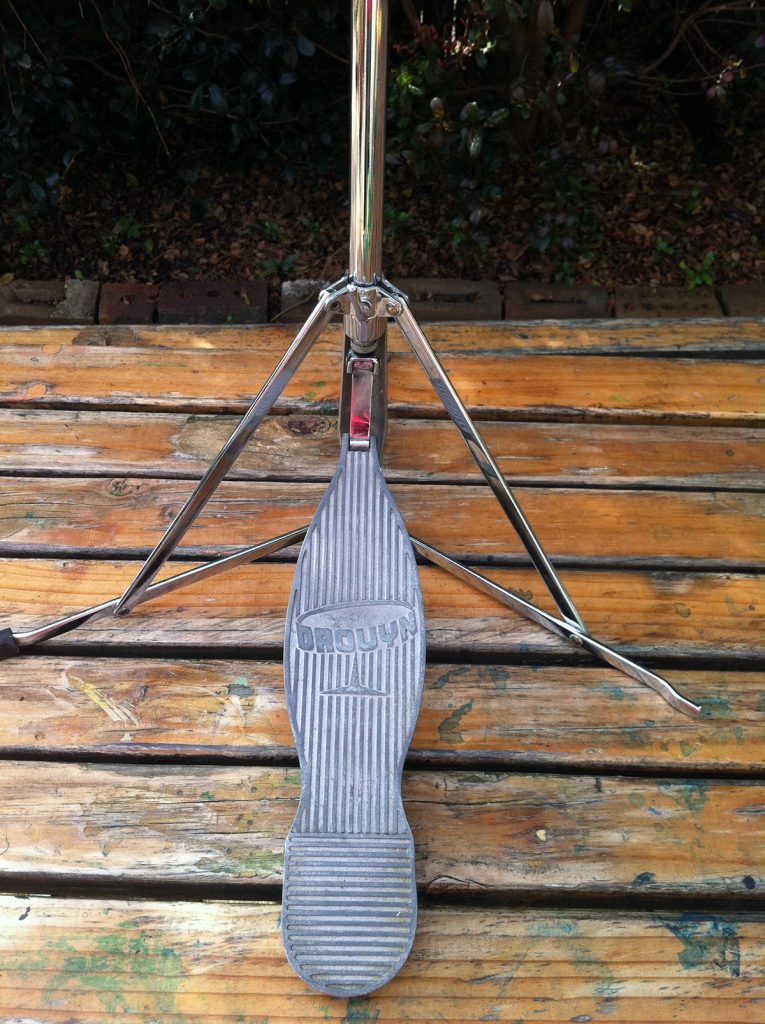
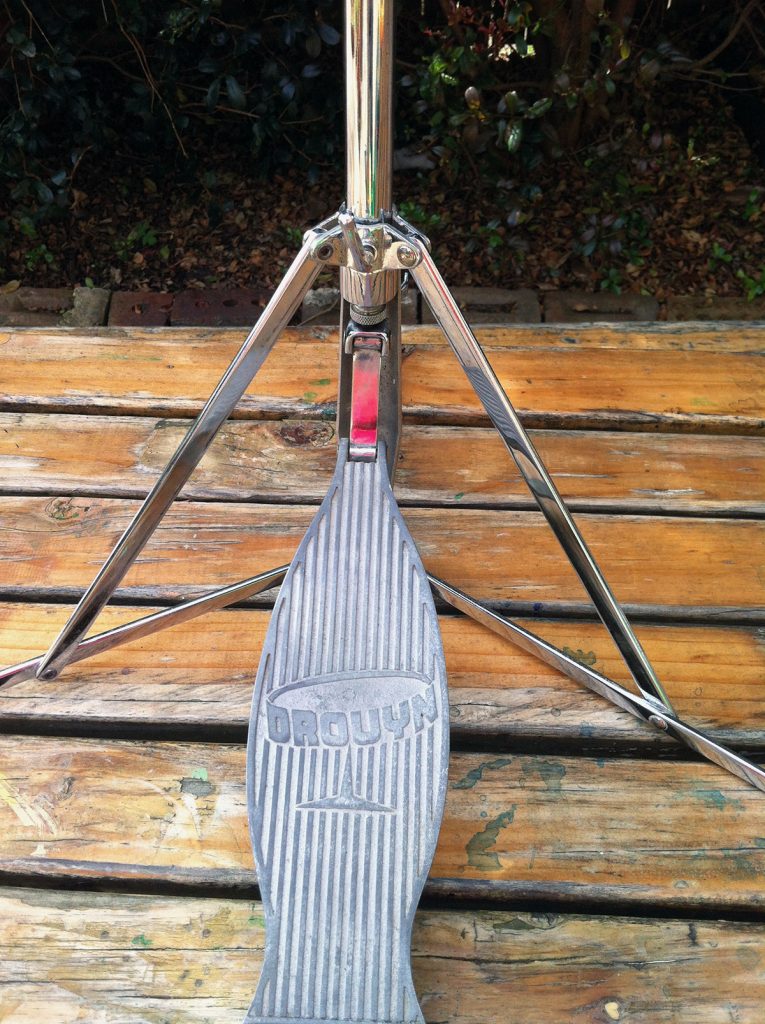


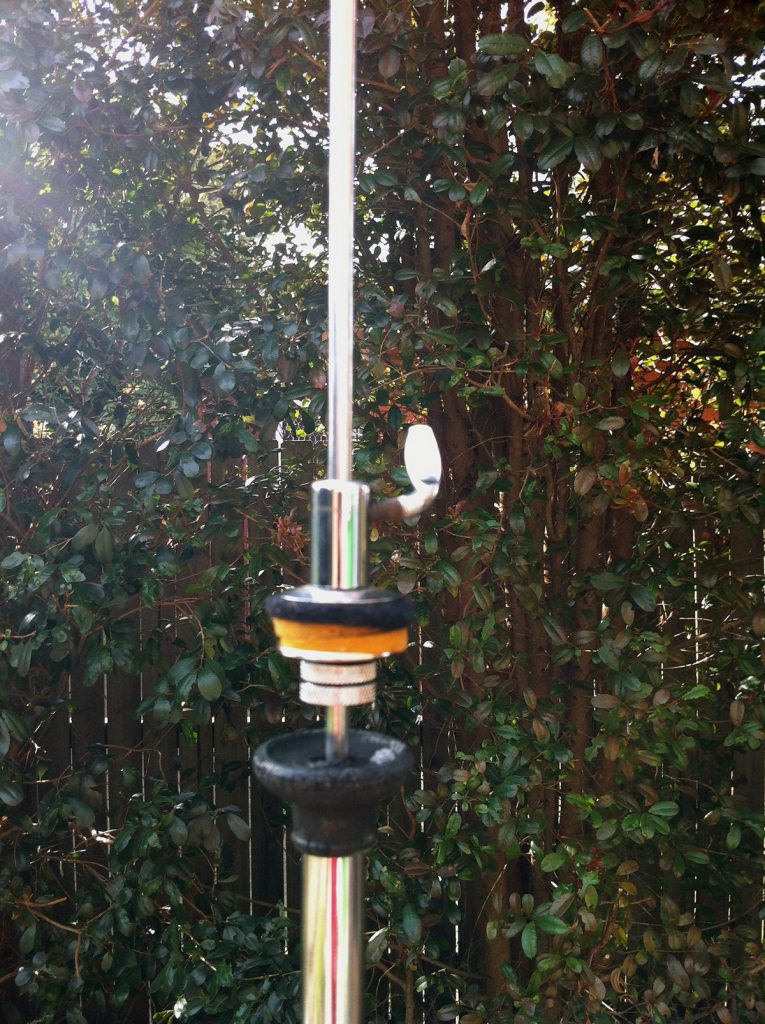
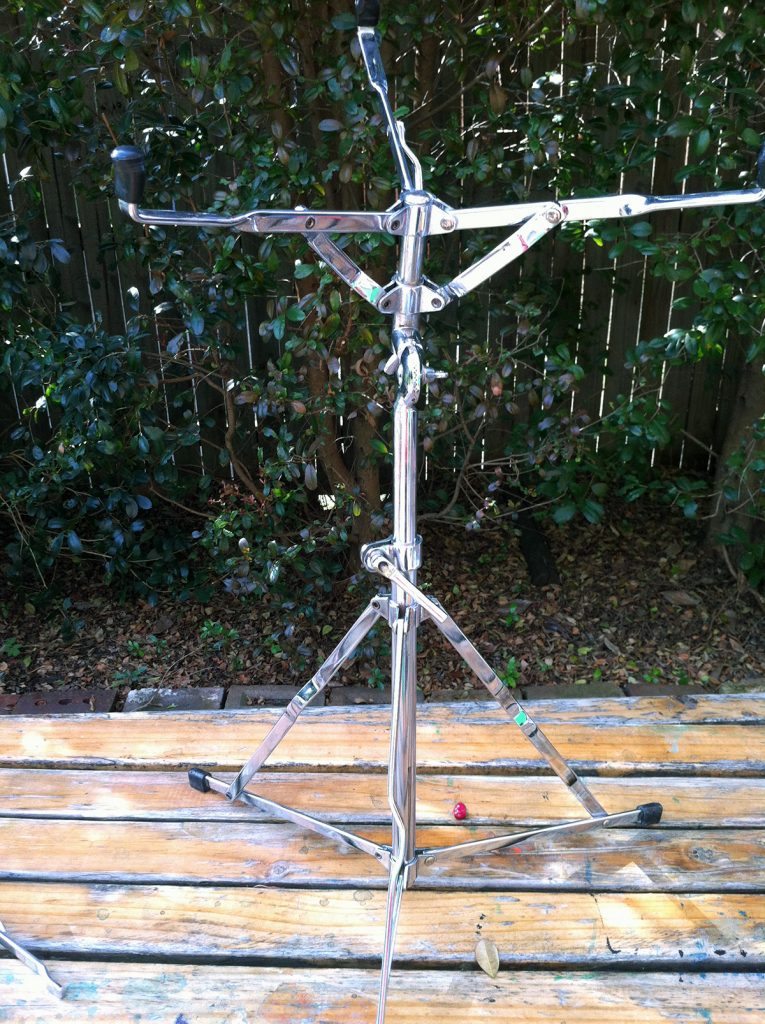

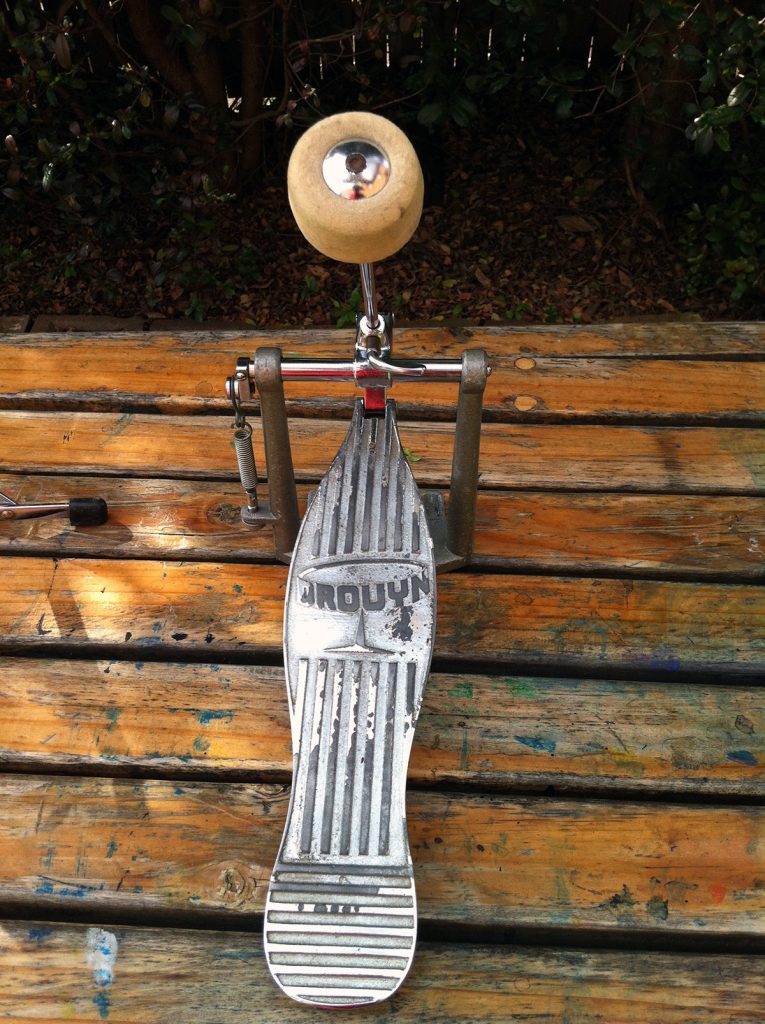

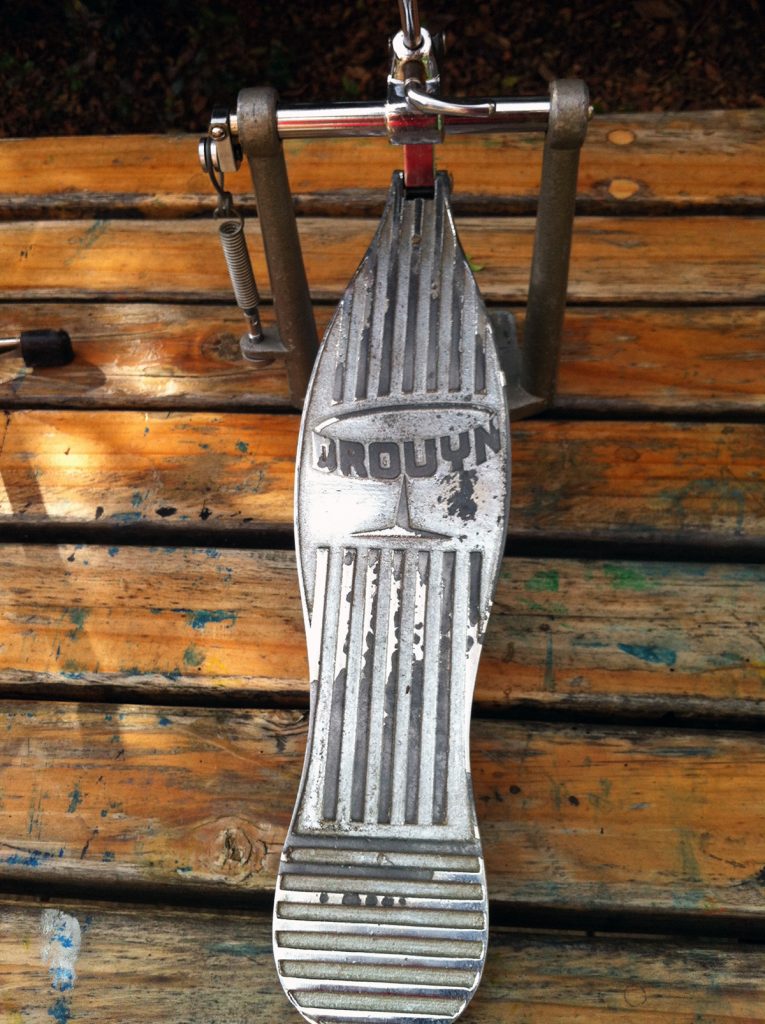
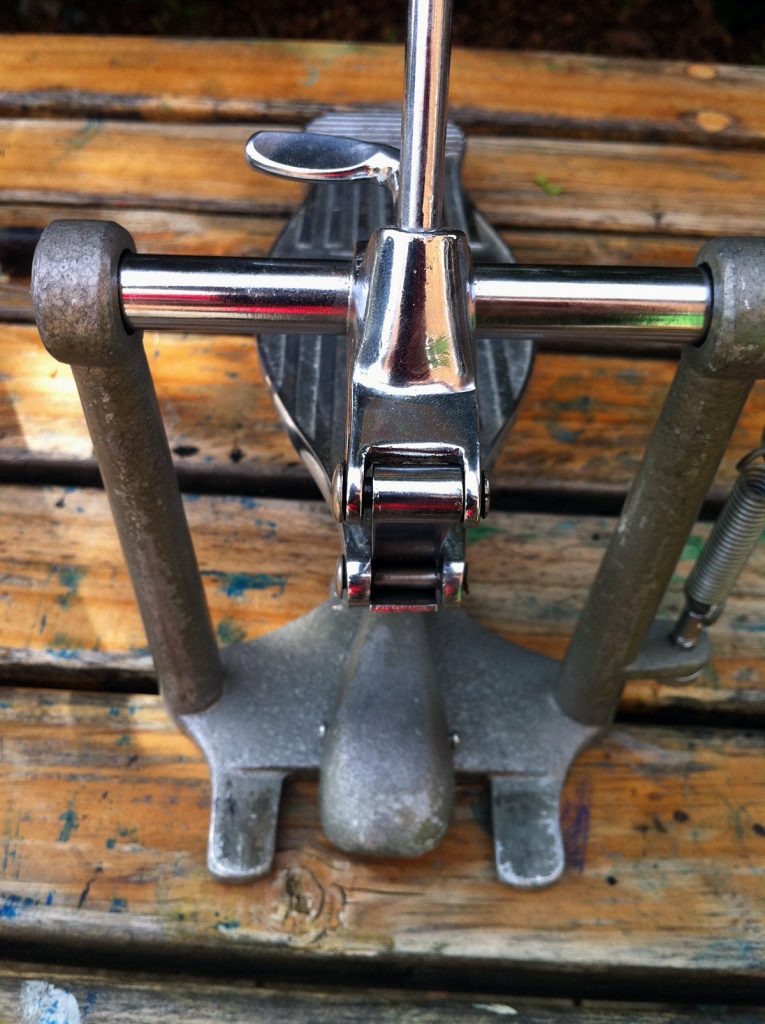
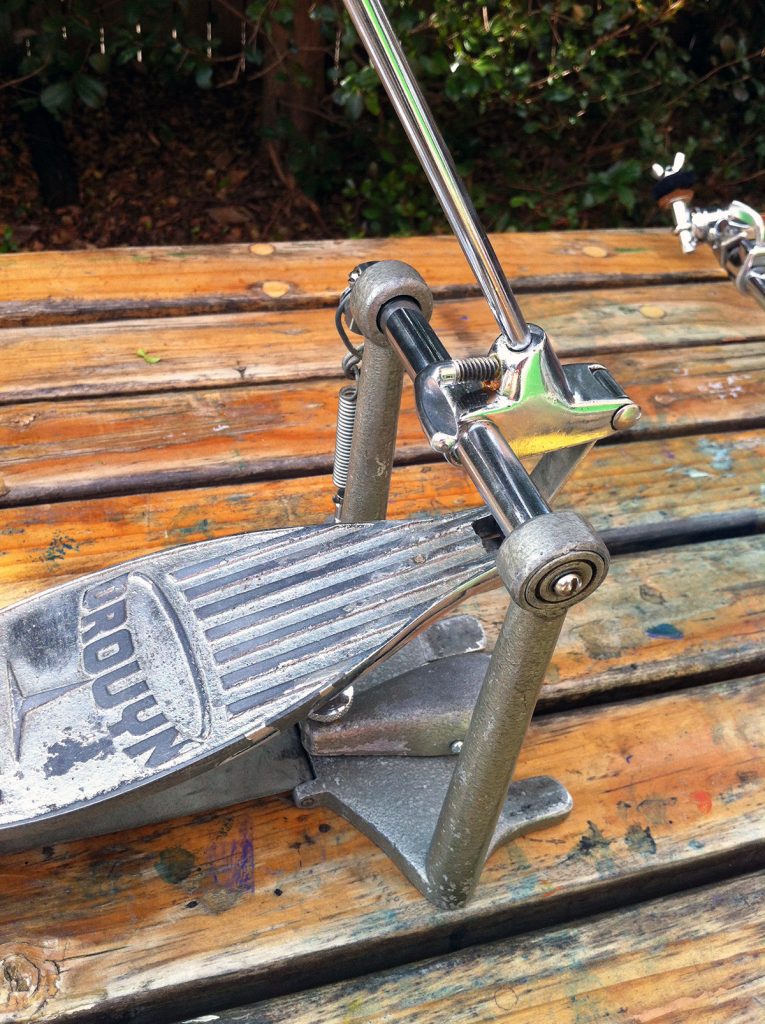

The kit included an A600 hi-hat stand, snare drum stand (model unknown, possibly a derivation of the A606 ‘Buck Rogers’ type stand), bass drum pedal (A602) and a Premier flat-based cymbal stand. The Drouyn stands are simple and quite elegant. They still function well, although the rubber feet have mostly perished.
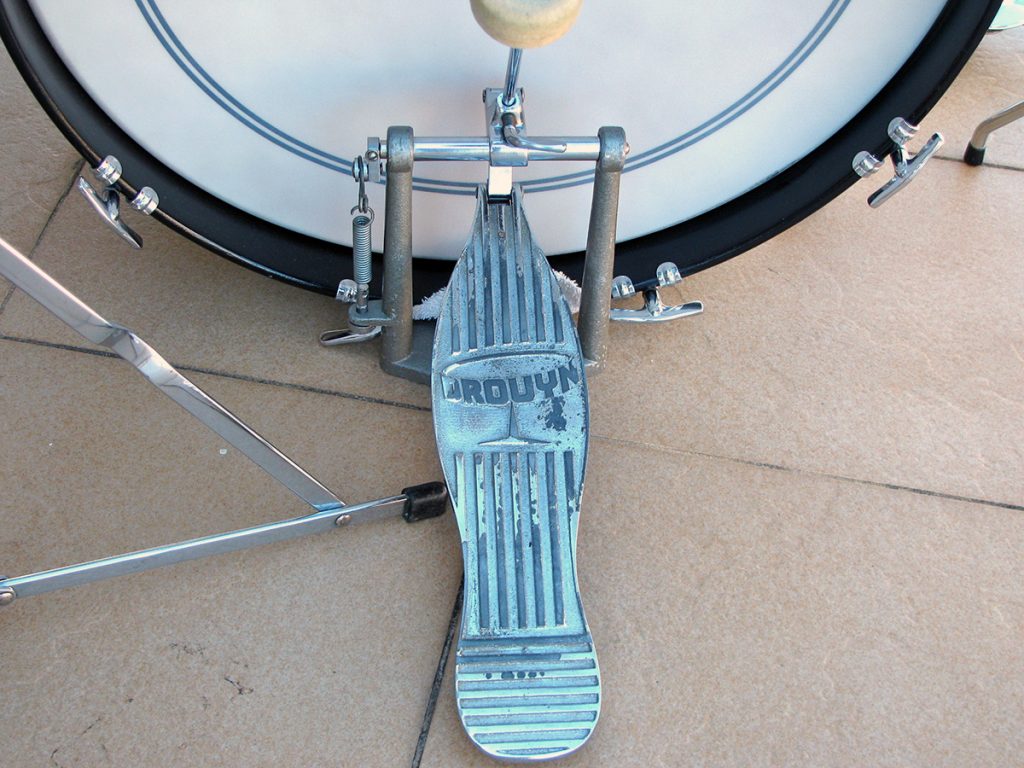
Previous: History
Next: S100 snare drum